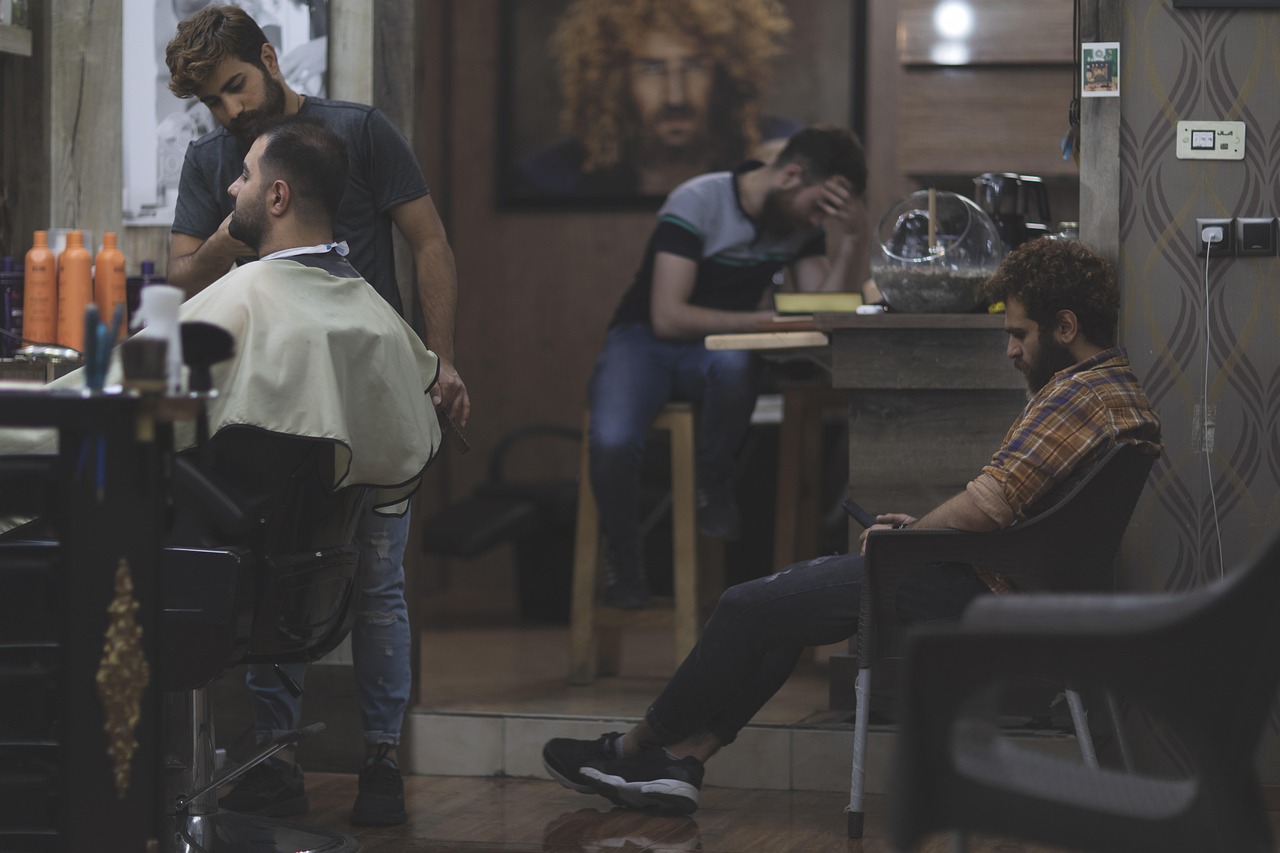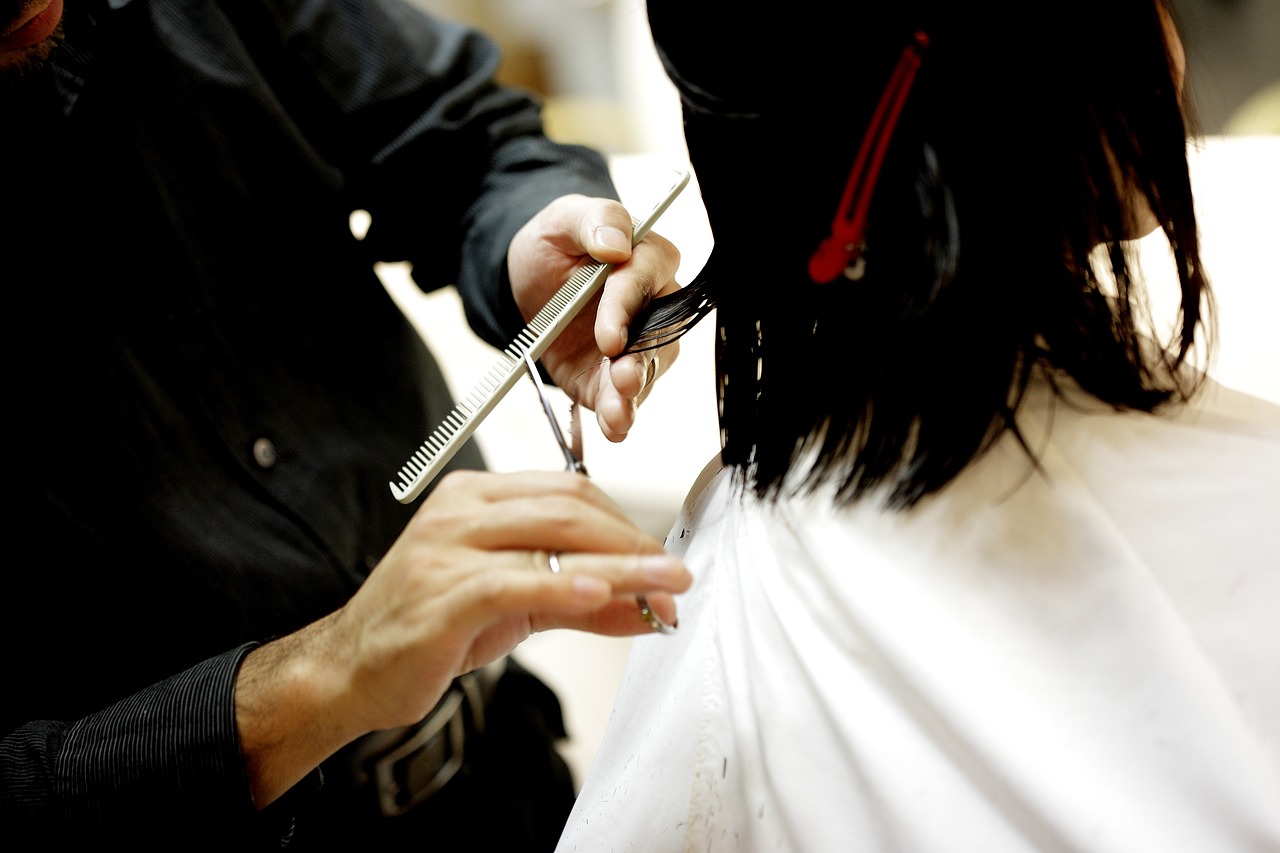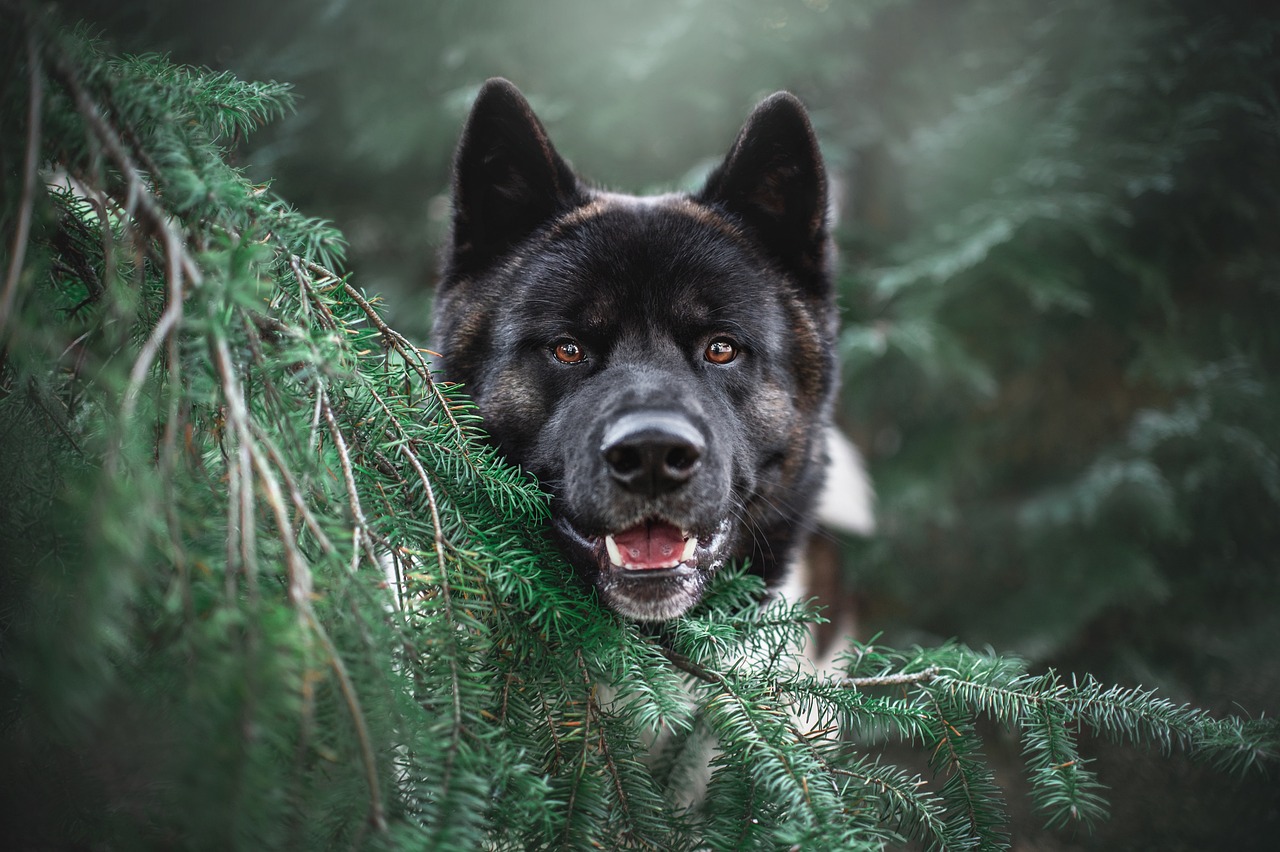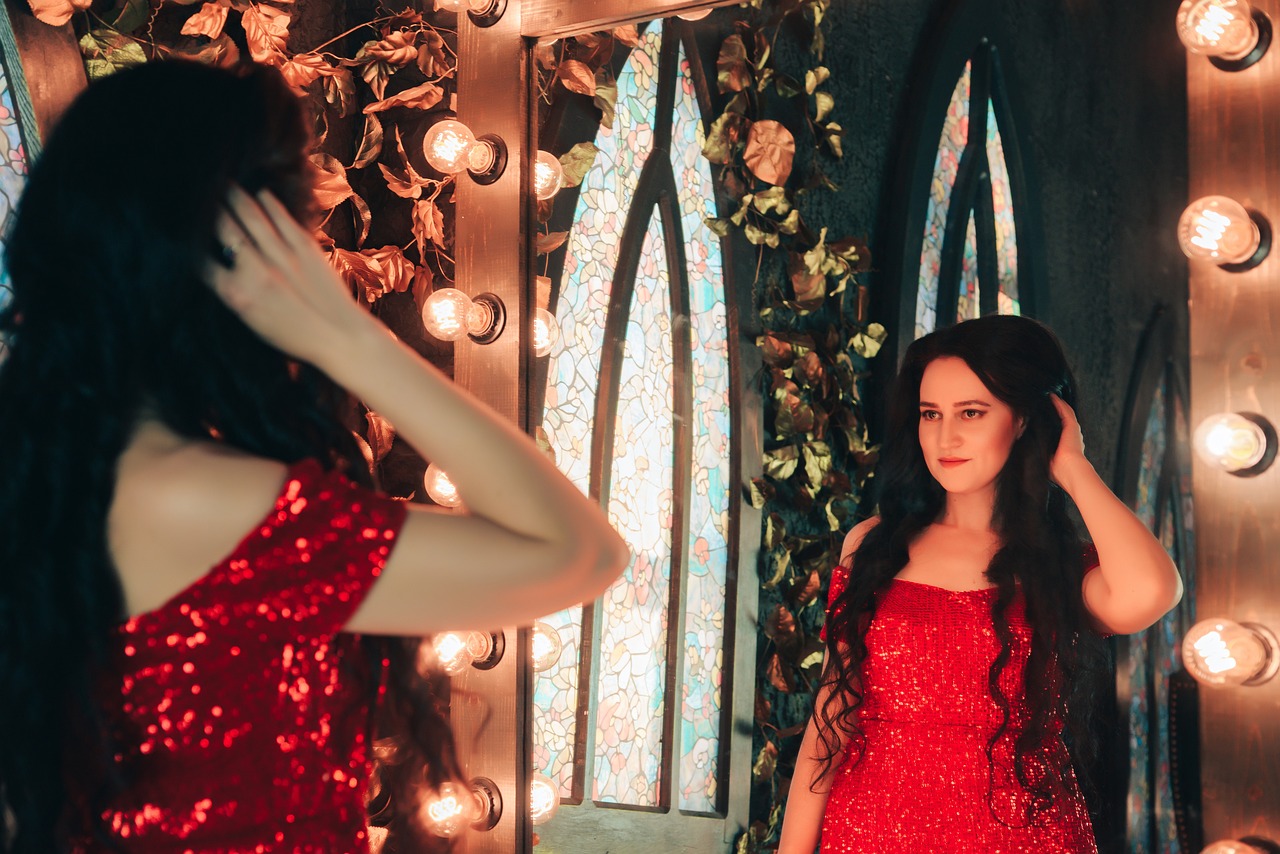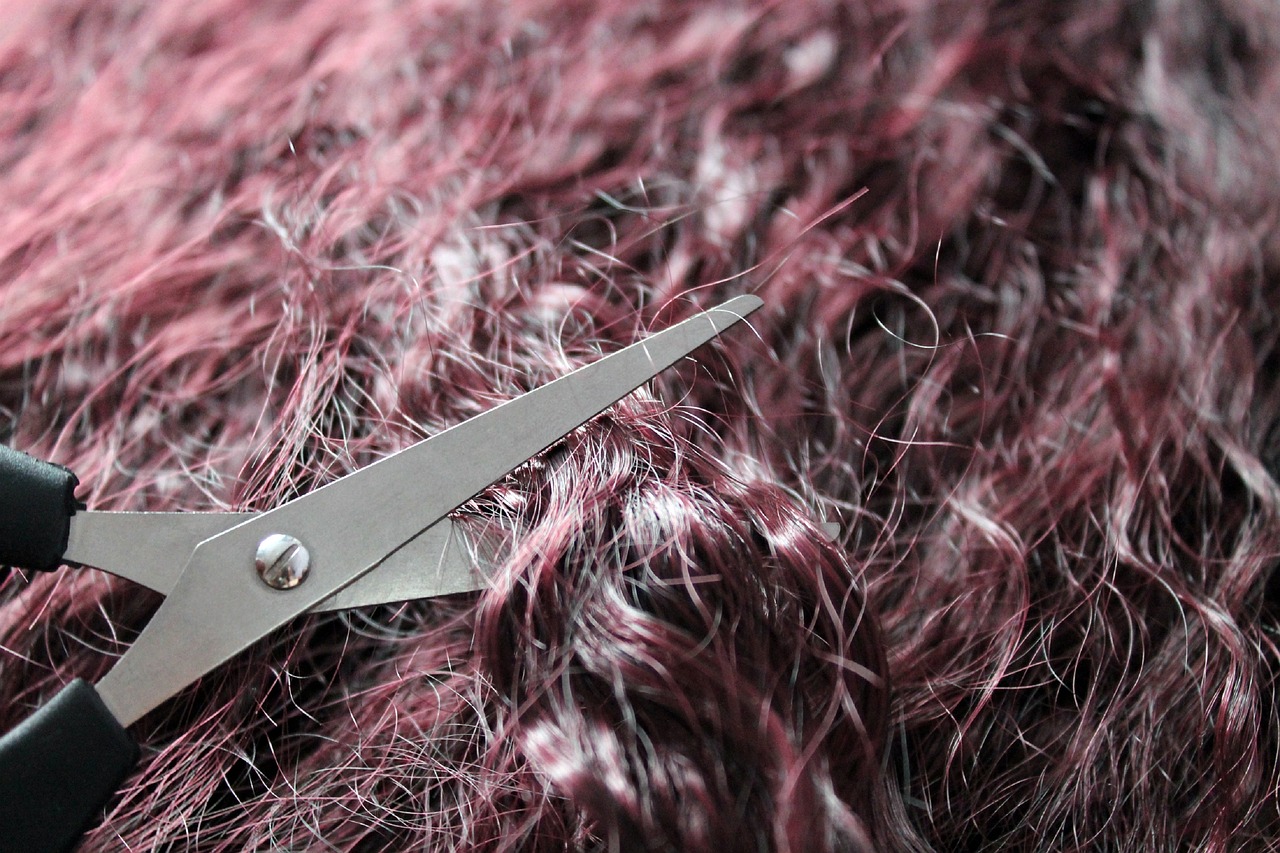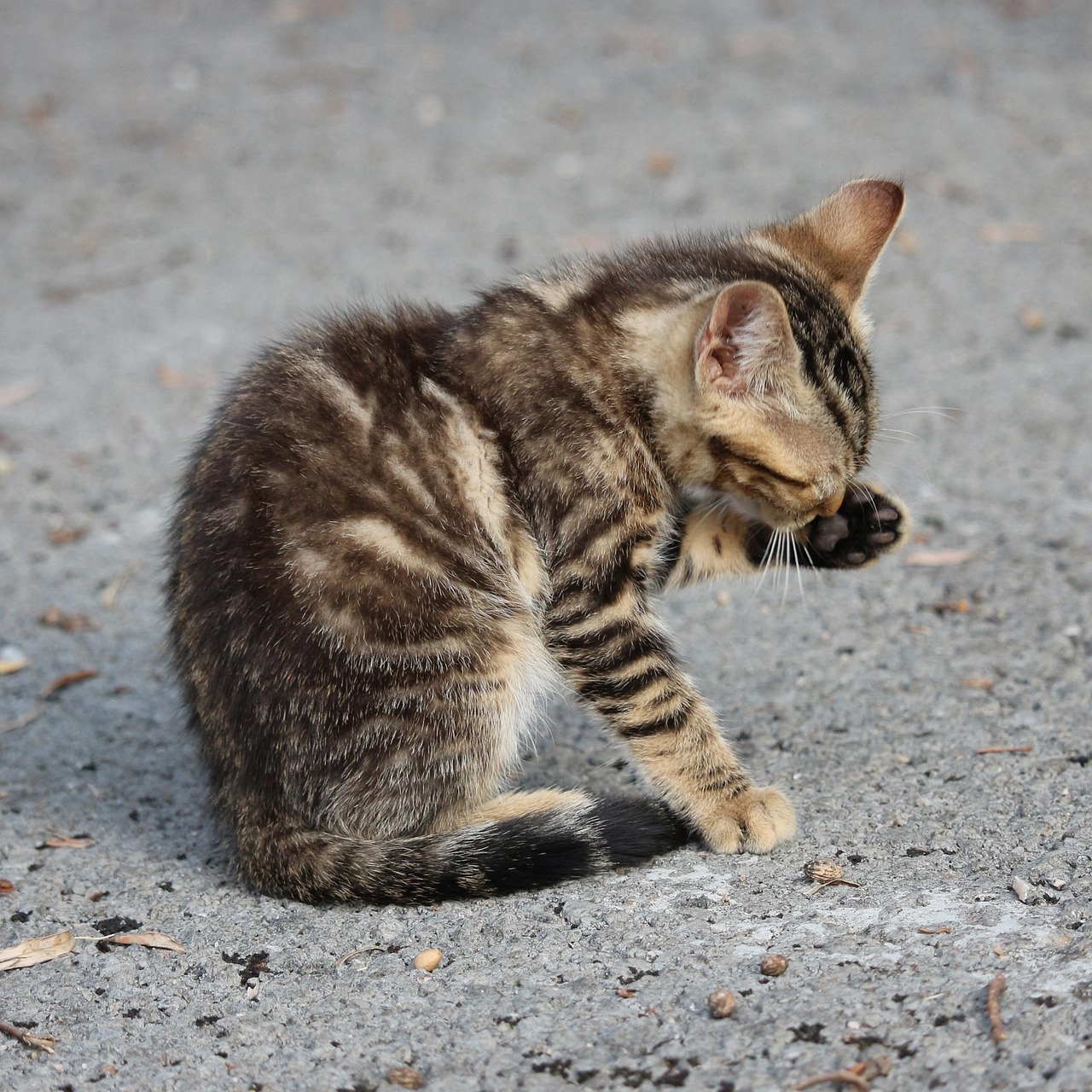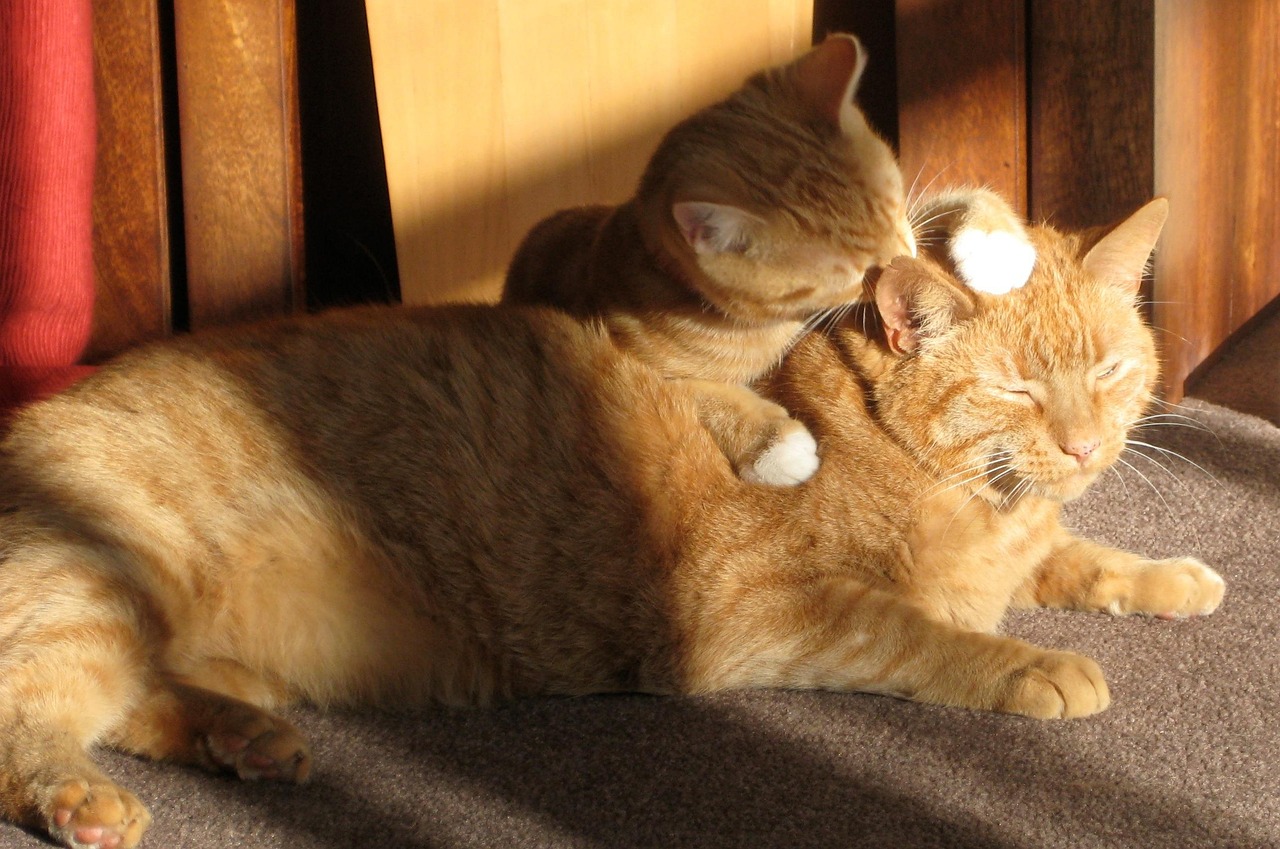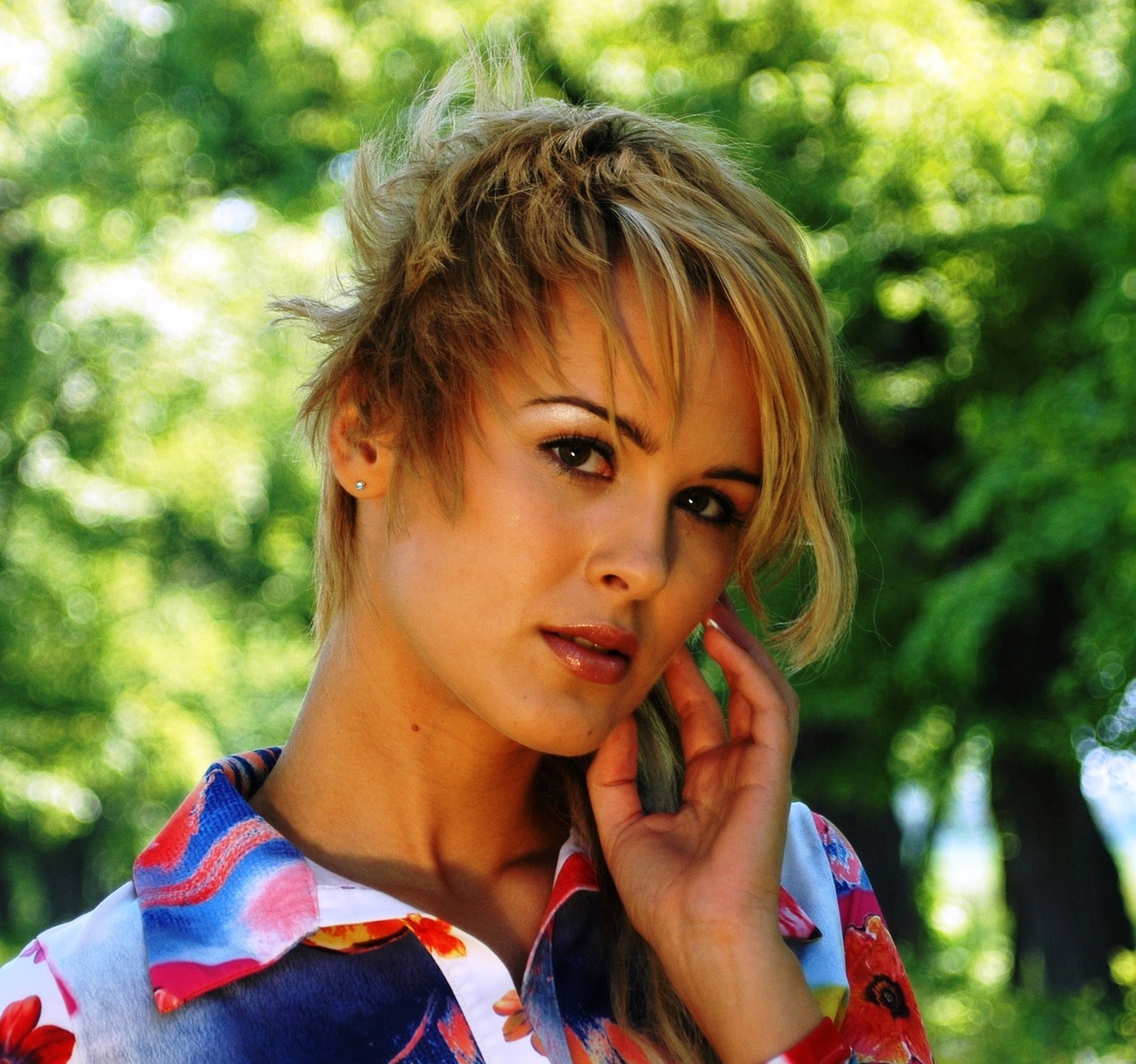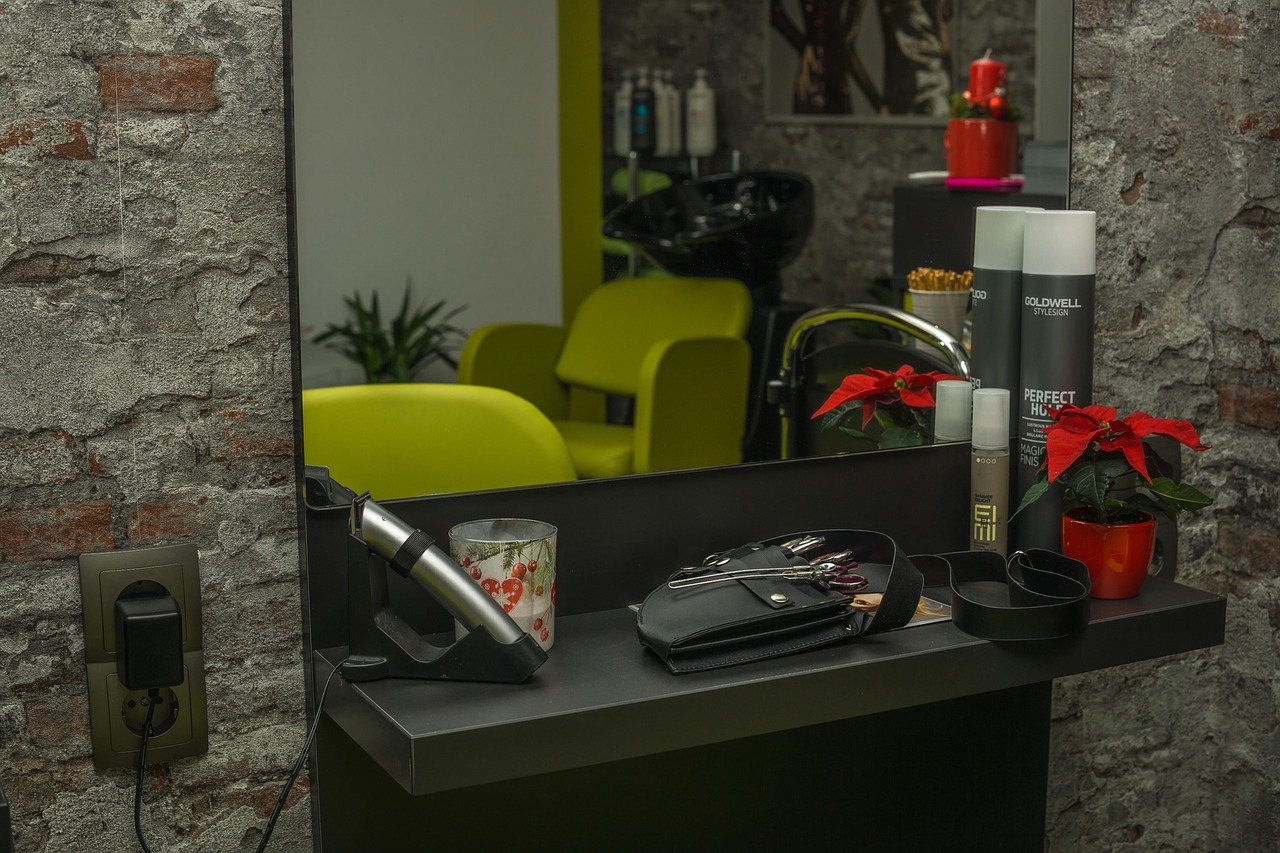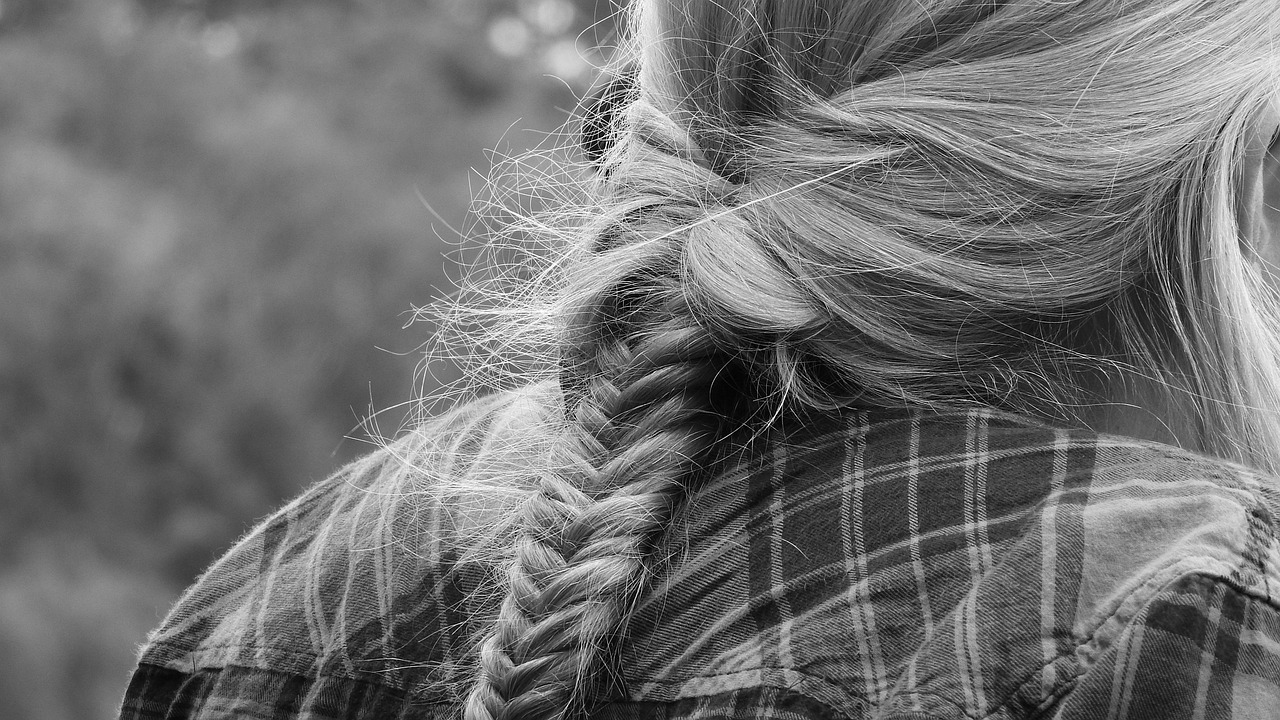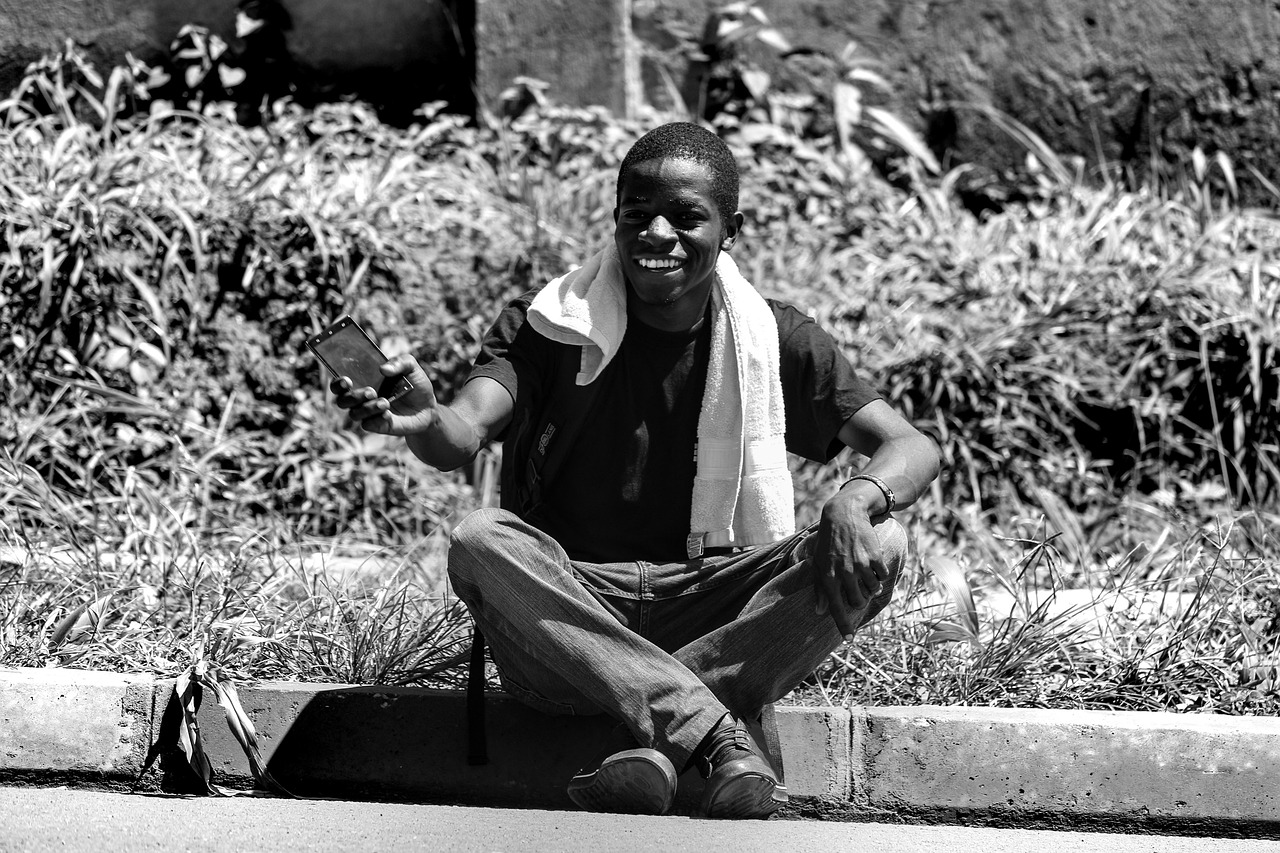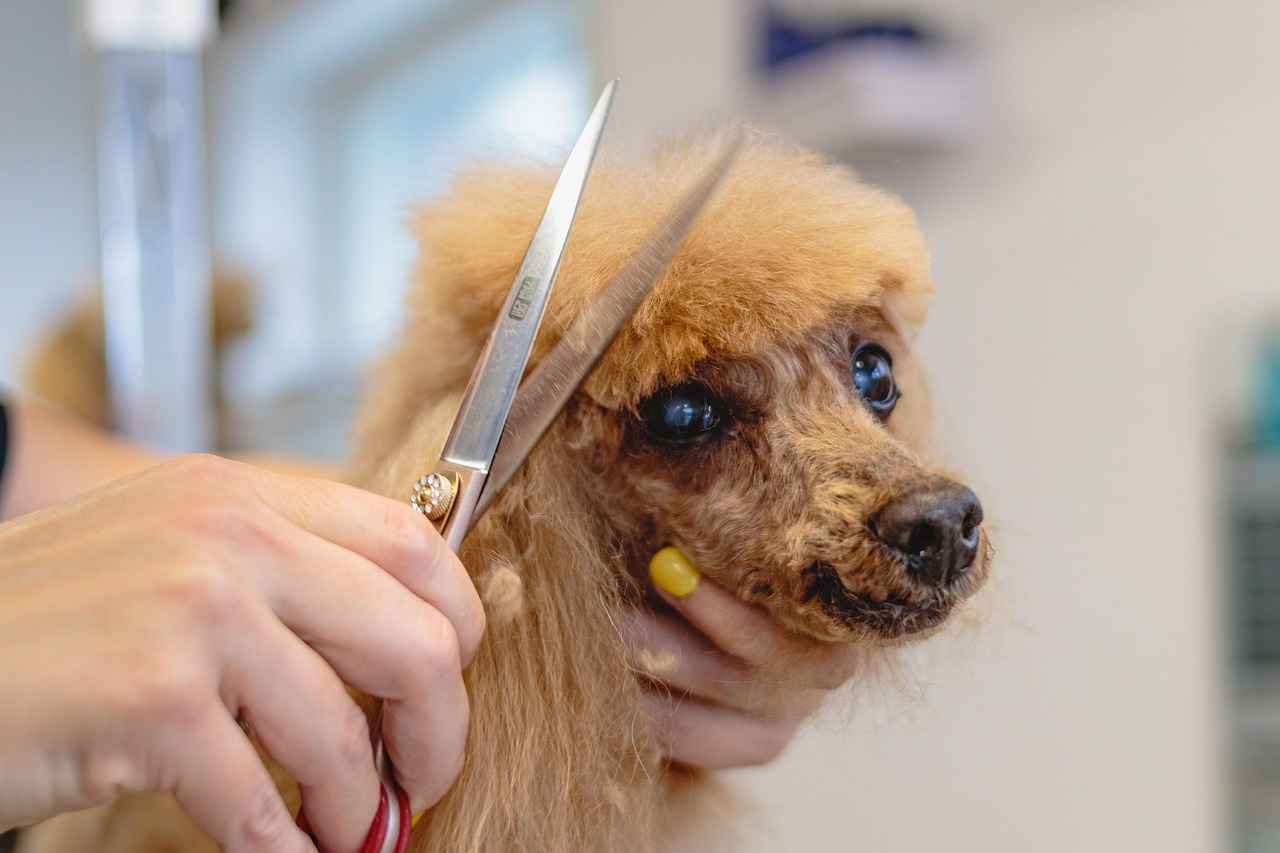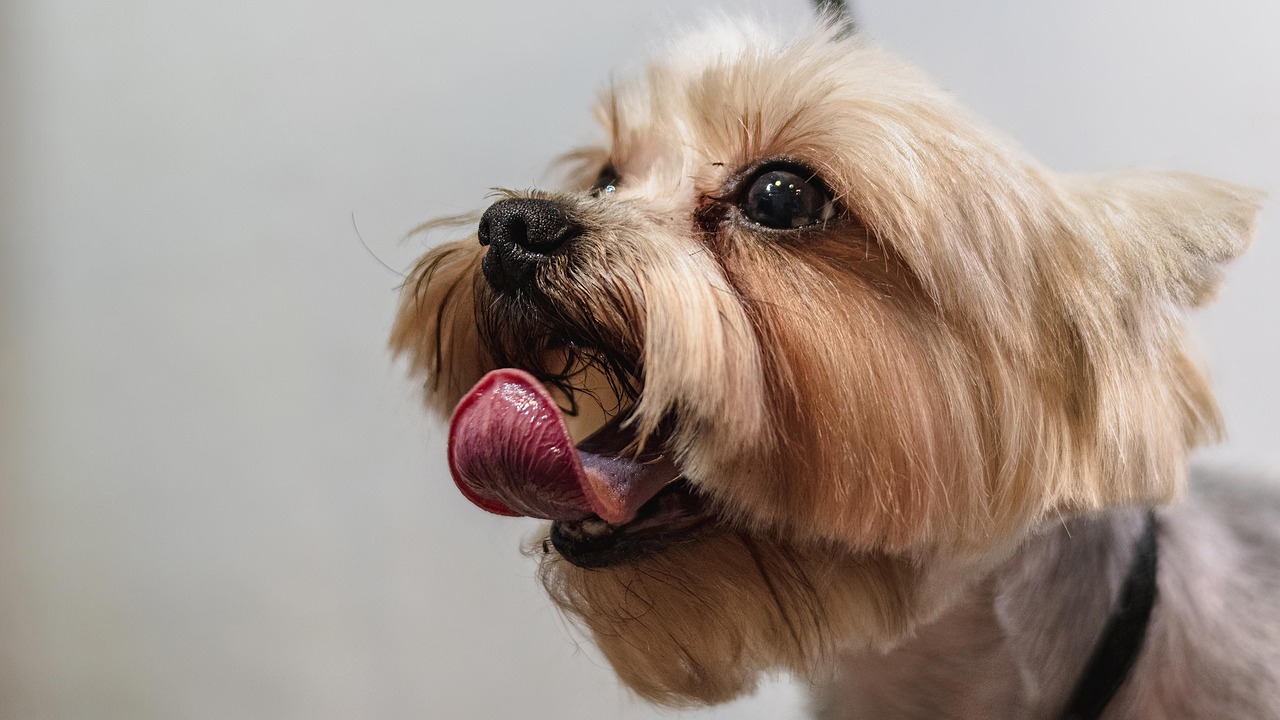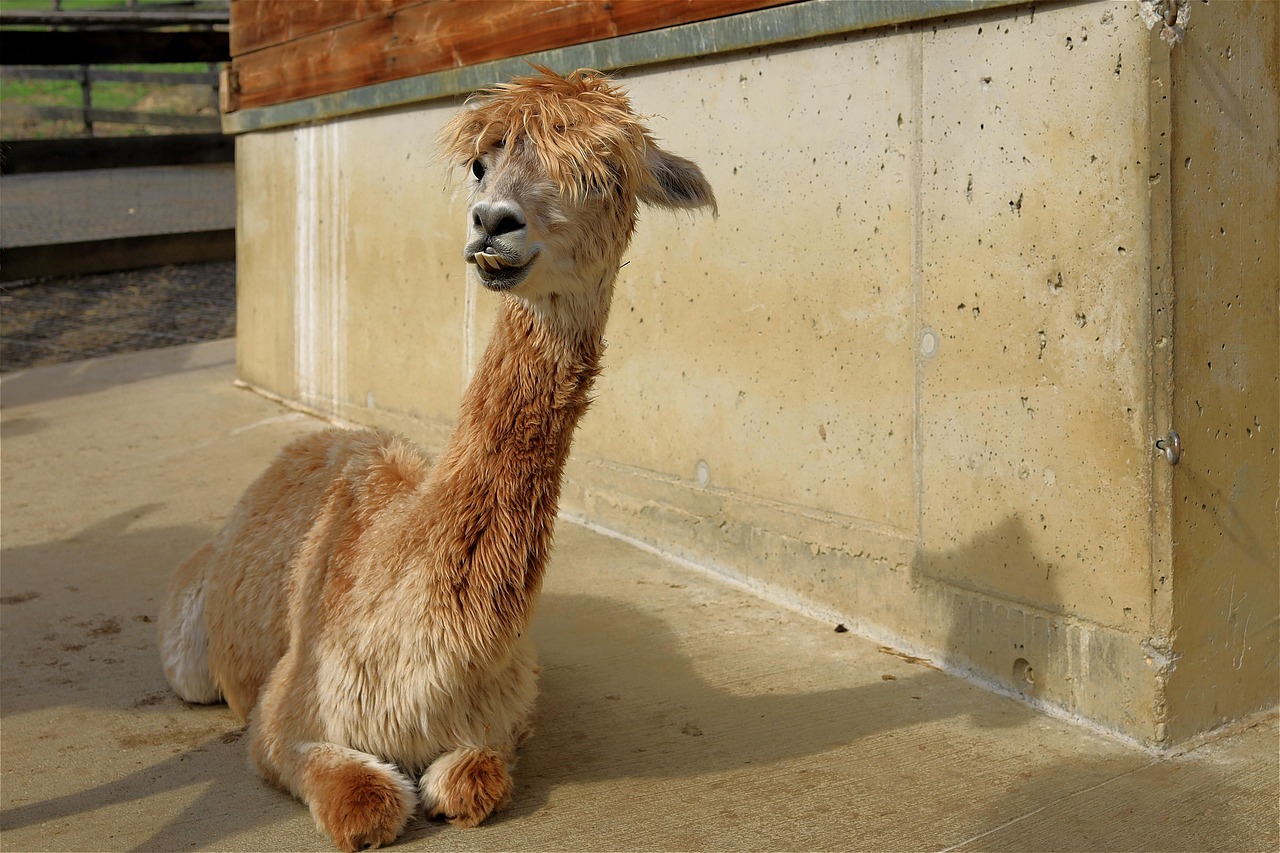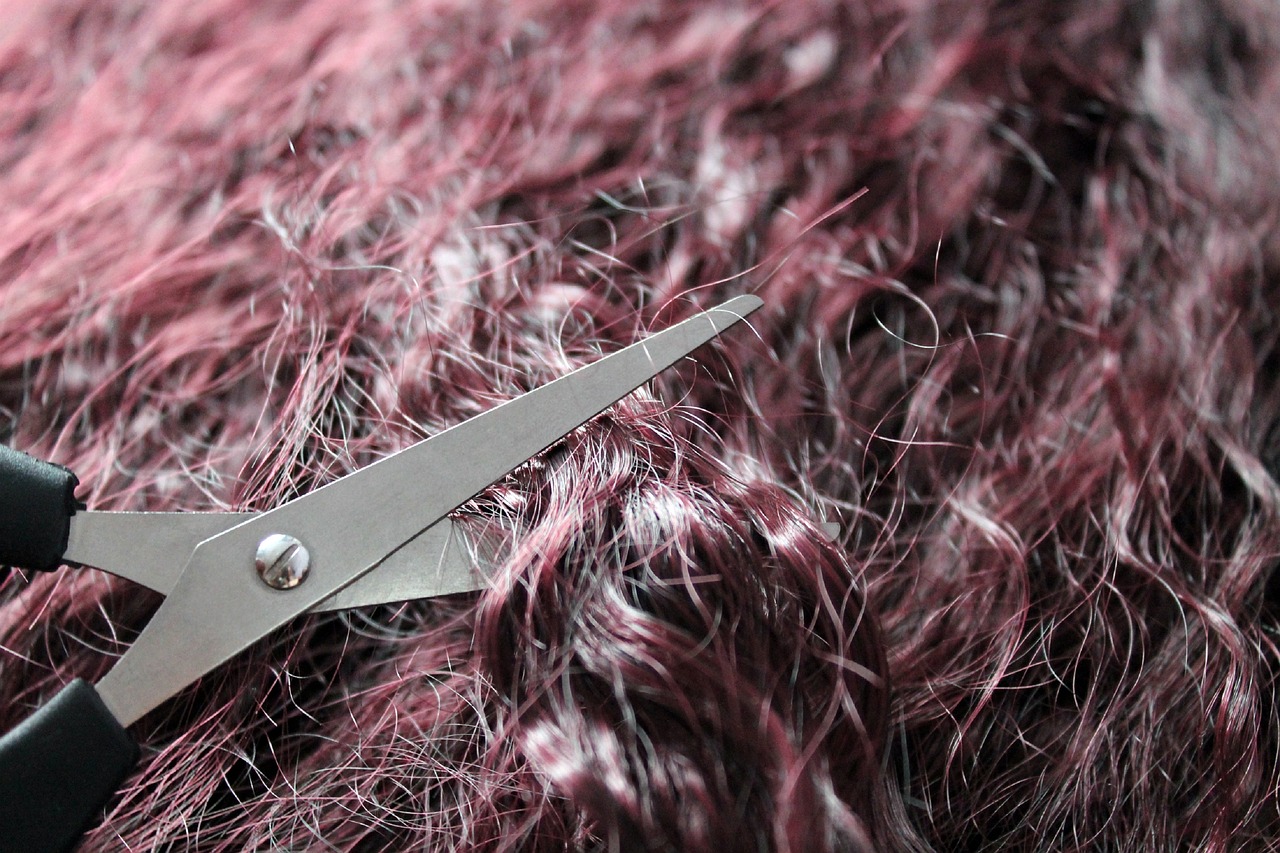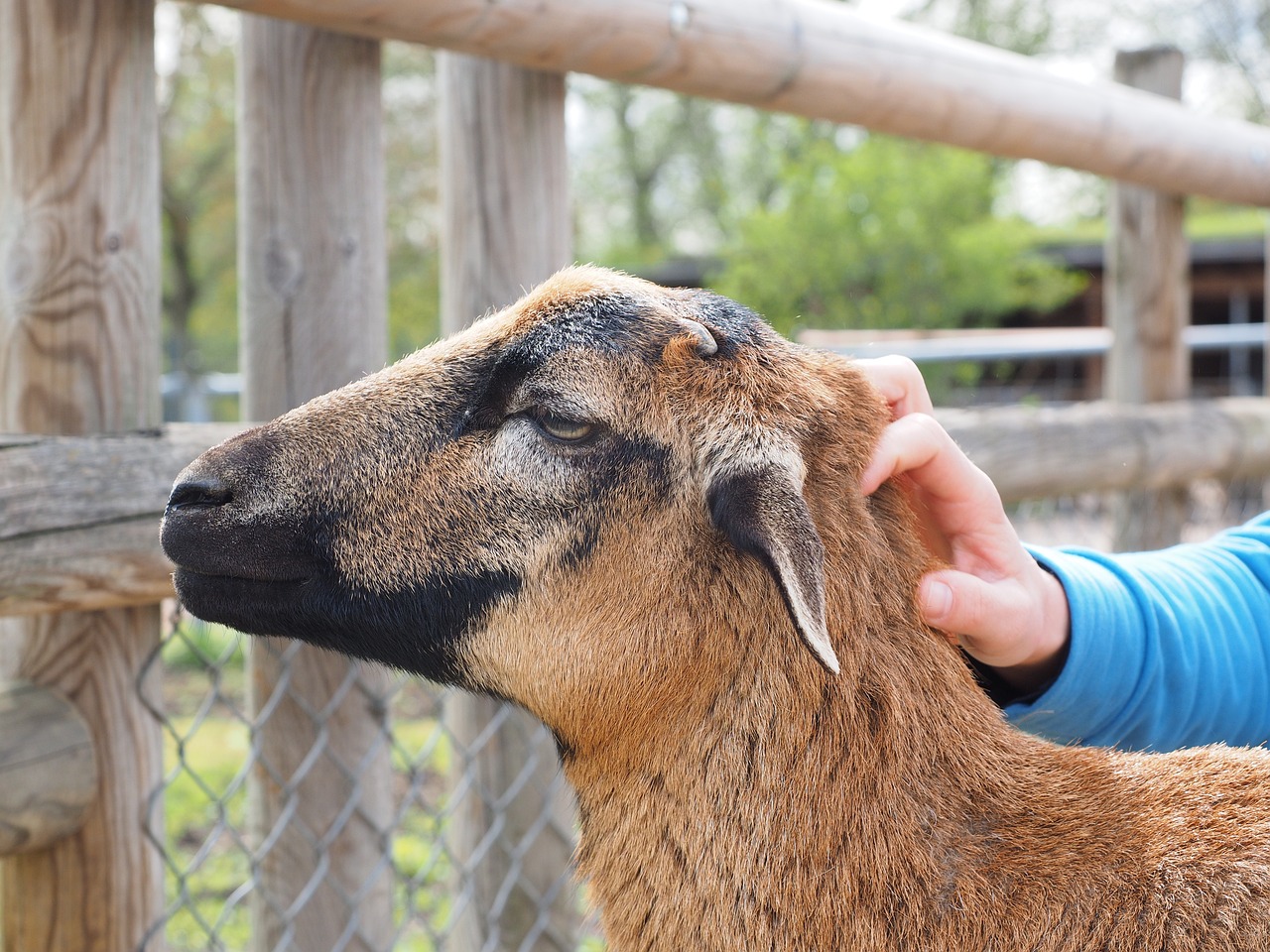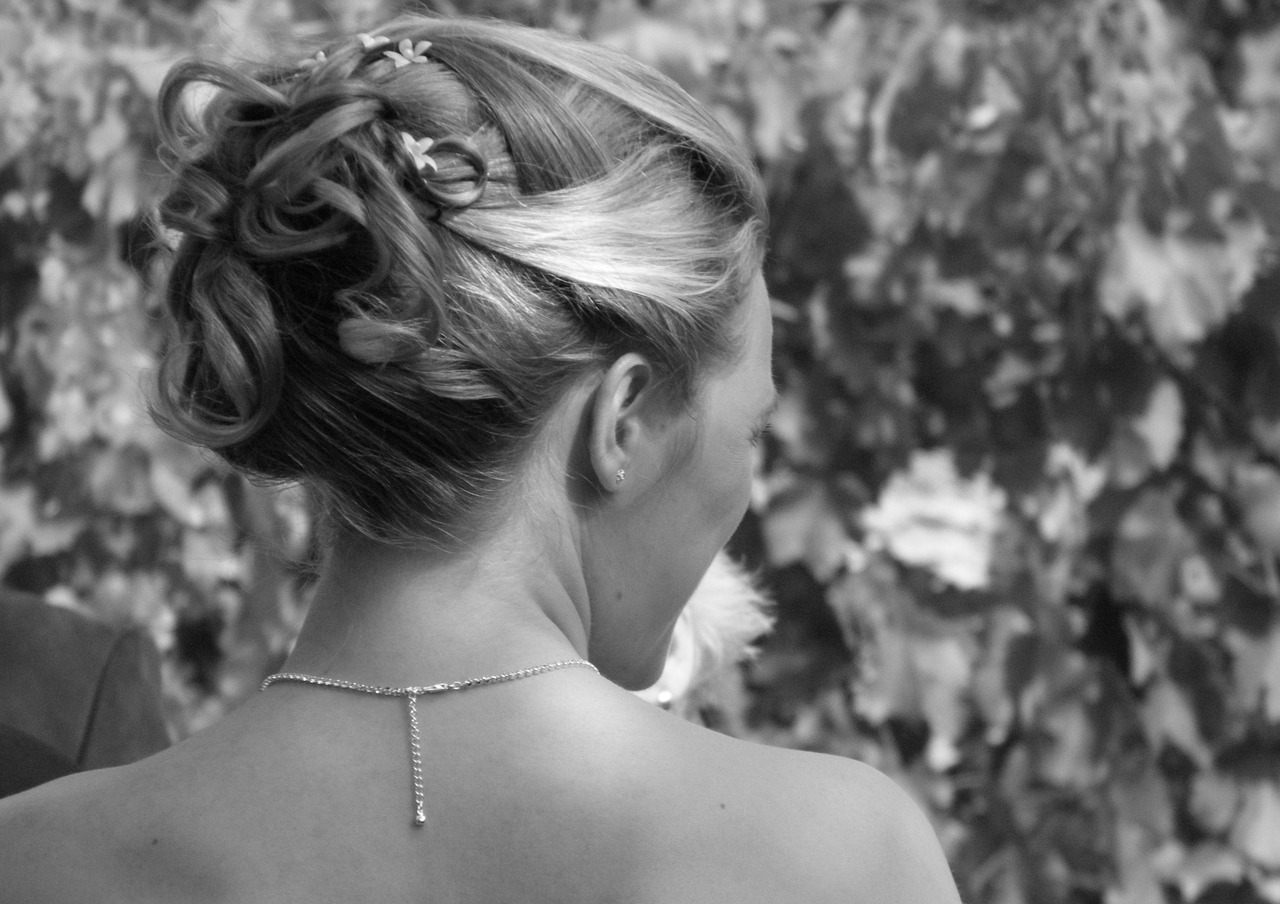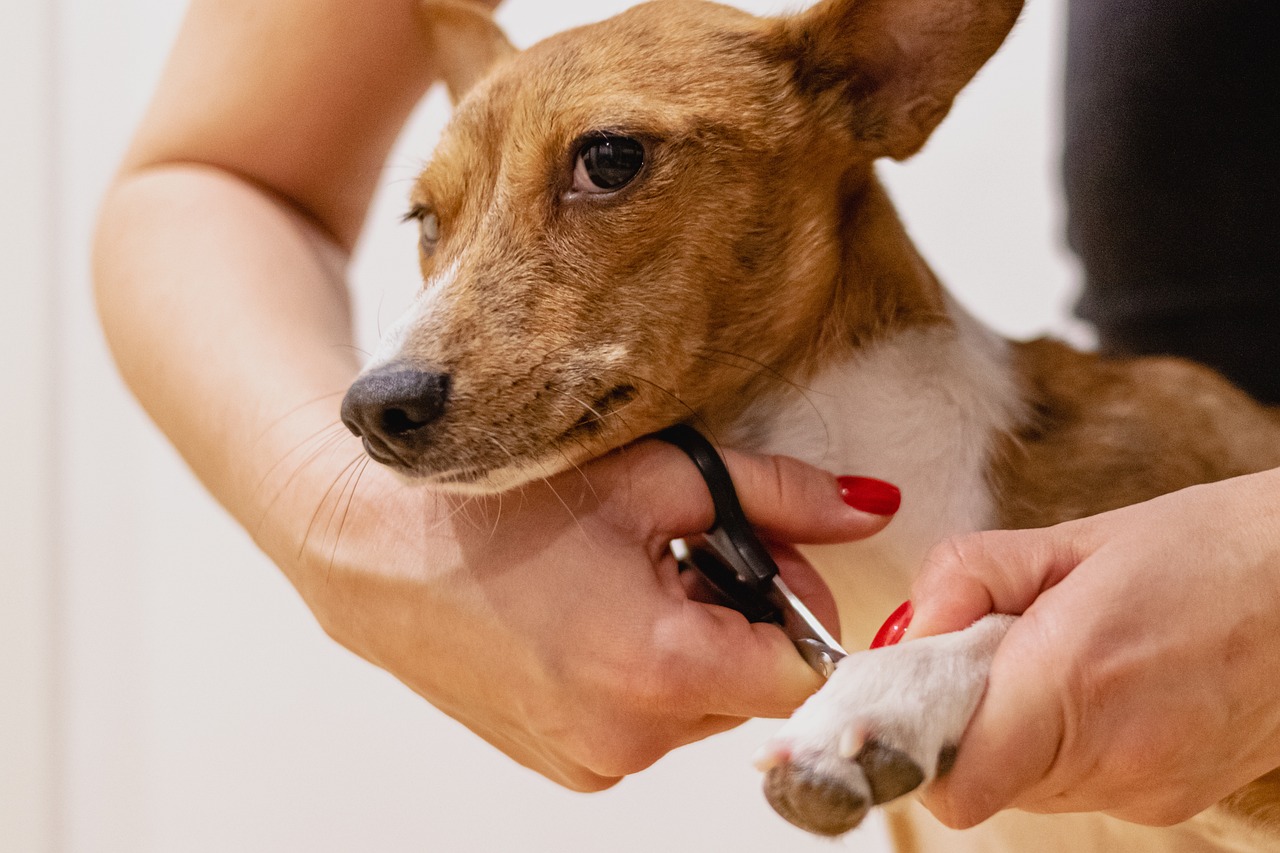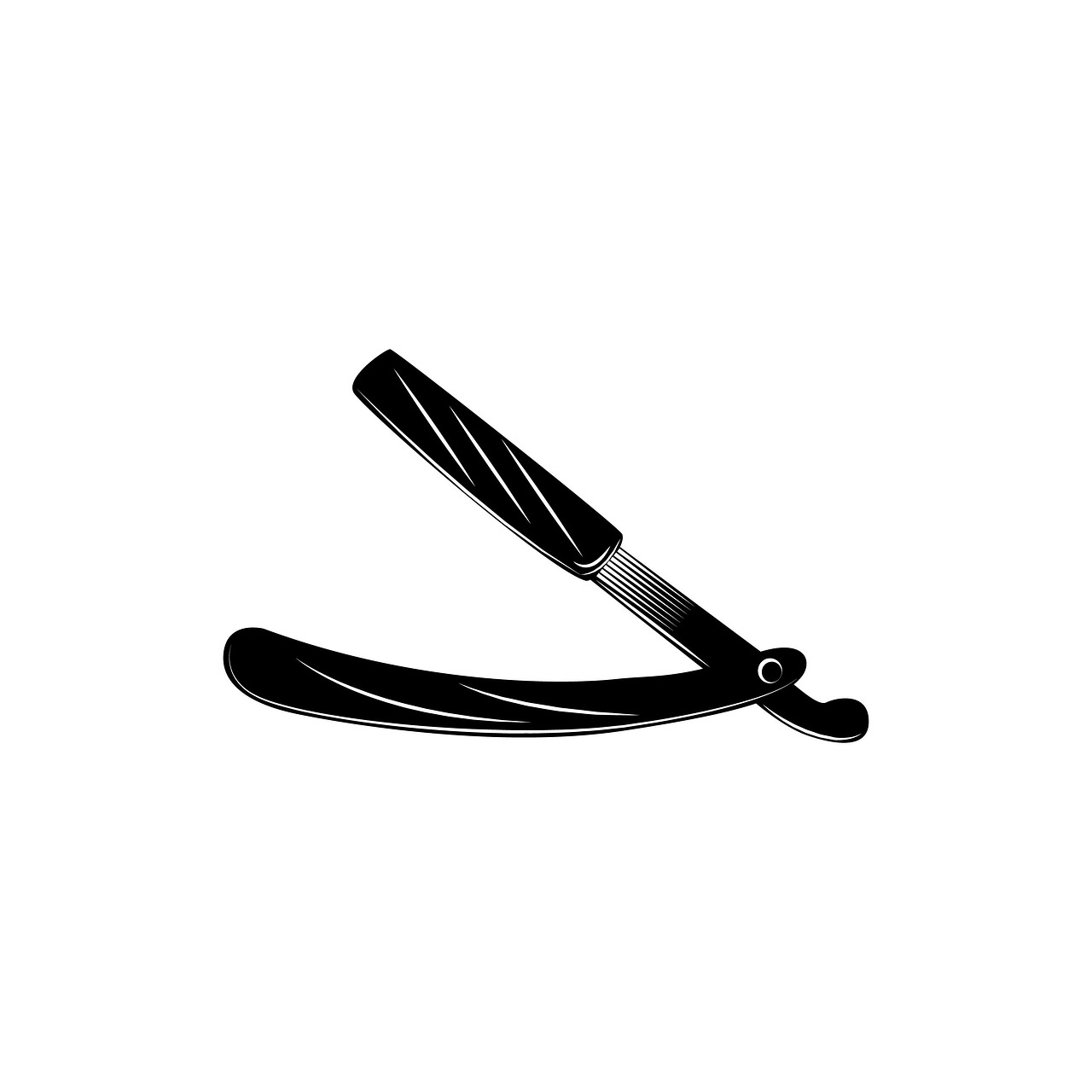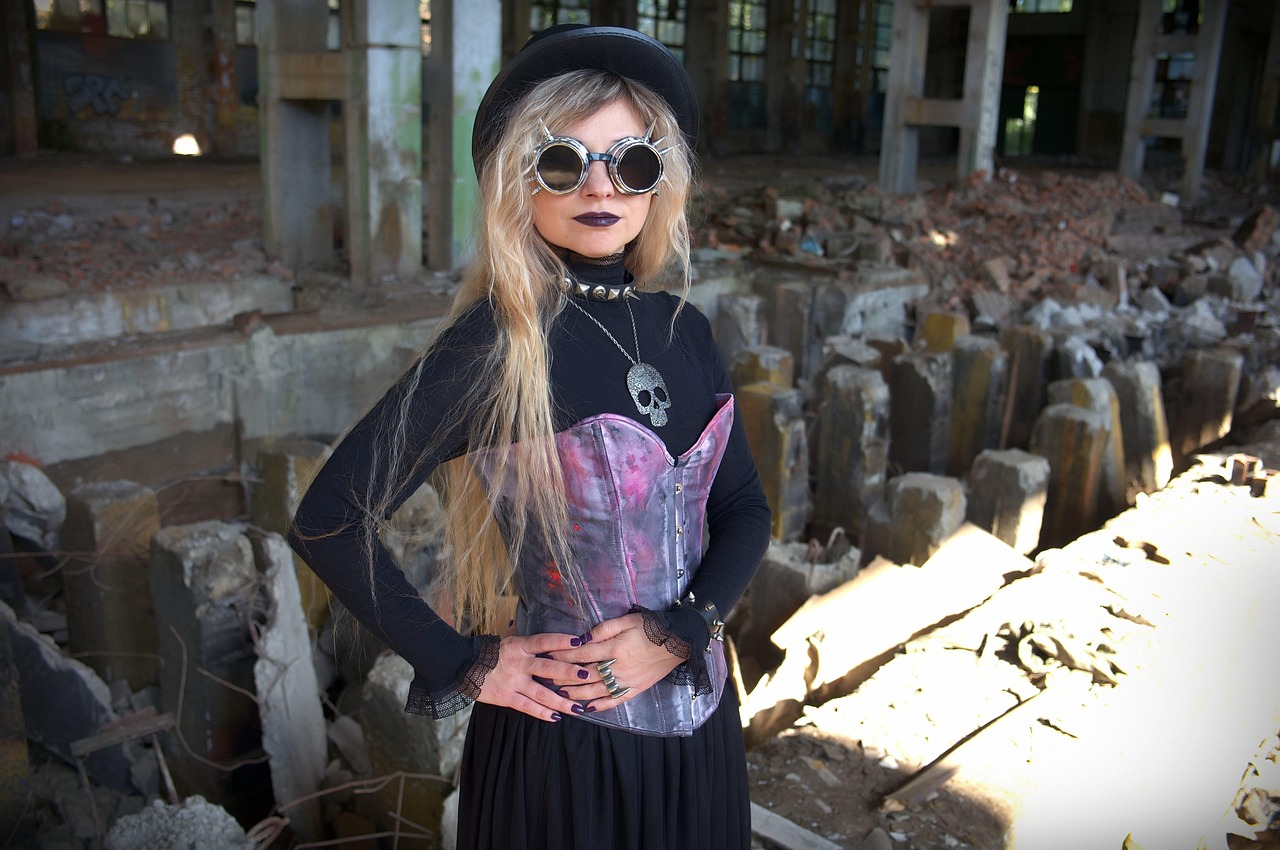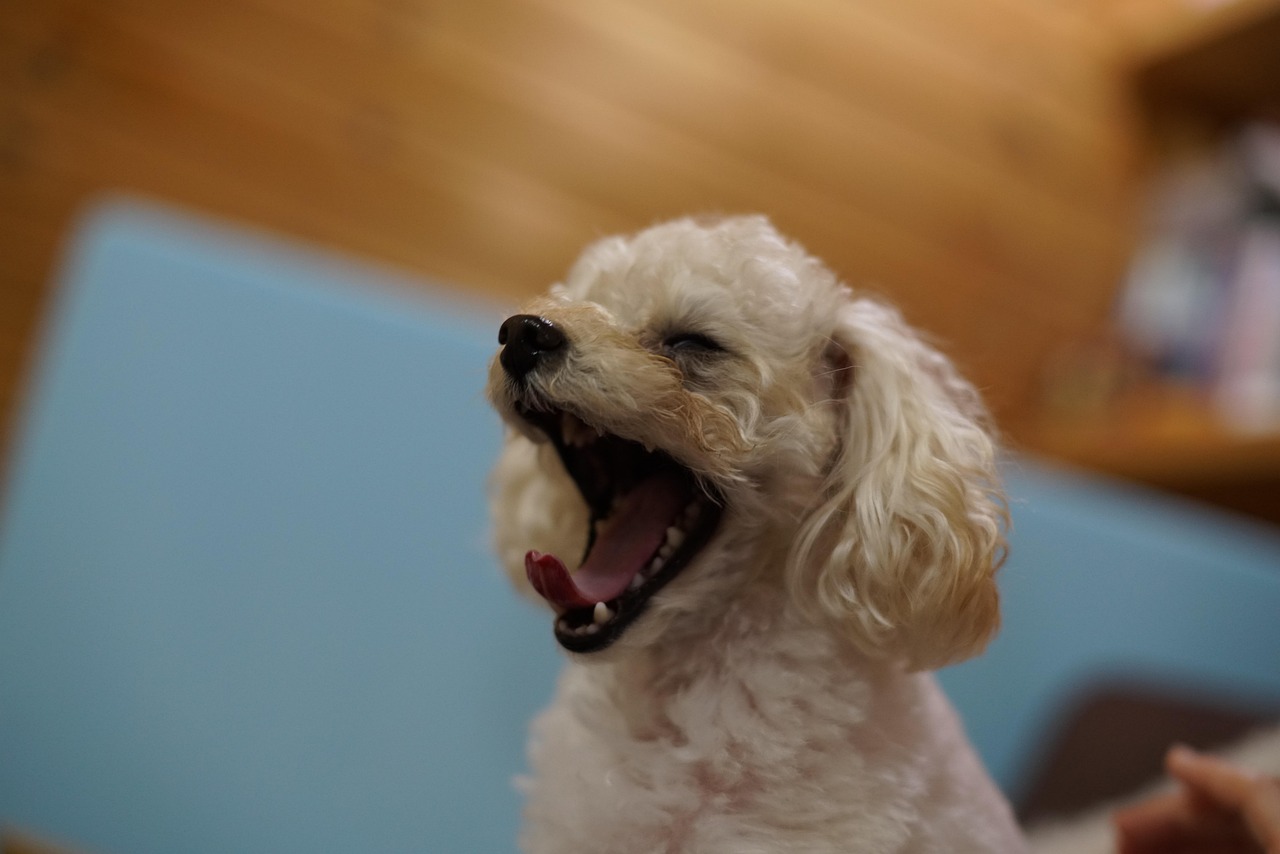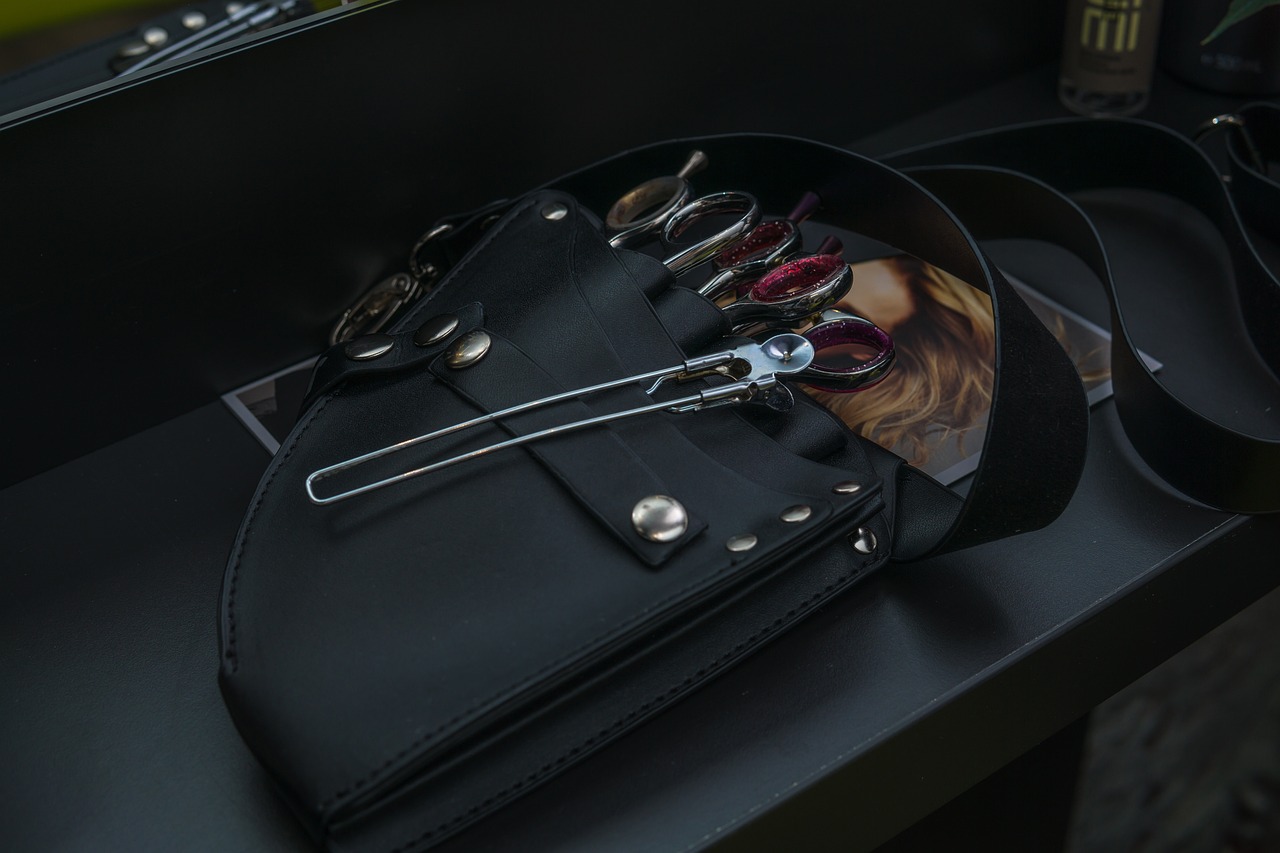When it comes to styling long, thin hair, the right haircut can make all the difference. Long, fine hair often lacks the volume and texture that many desire, making it essential to choose styles that enhance its natural beauty. This article delves into various haircut styles and techniques specifically designed to boost volume and create a fuller appearance, providing practical tips for achieving the perfect look.
What Are the Best Haircuts for Long Thin Hair?
- Layered Cuts: Adding layers helps create movement and dimension, giving the illusion of thicker hair.
- Blunt Ends: A blunt cut can make fine hair appear denser and healthier.
- Textured Bobs: A bob with texture adds volume and is easy to maintain.
How Do Layers Affect Volume in Fine Hair?
Layers are a game changer for long, thin hair. By incorporating various layering techniques, you can create a sense of body and movement. For instance, long layers can add softness, while shorter layers can provide a more dramatic lift.
Face-Framing Layers
Face-framing layers not only enhance volume but also add a touch of elegance to your hairstyle. These layers can highlight your facial features, making your look more balanced and sophisticated.
Benefits of Face-Framing Layers
- They add versatility to your hairstyle, allowing for various styling options.
- They can soften your overall appearance, making your features stand out.
How to Style Face-Framing Layers
To style face-framing layers effectively, consider using volumizing products such as mousse or root-lifting sprays. A round brush can also help create a polished finish while adding lift at the roots.
Long Layers vs. Short Layers
Understanding the difference between long and short layers is essential. Long layers can create a more natural look, while short layers can add significant height and volume, depending on your hair type and personal preference.
What Techniques Can Add Volume to Fine Hair?
Incorporating specific styling techniques can maximize the volume of your hair. Techniques such as blow-drying, curling, and using volumizing products can significantly enhance fullness.
The Art of Blow-Drying for Volume
Blow-drying is a crucial technique for adding volume. Using a round brush while blow-drying can help lift the roots and create an airy, full-bodied style. Ensure you use the right heat settings to avoid damaging your hair.
Curling Techniques for Fine Hair
Curling your hair can instantly add body and movement. Opt for a curling wand with a smaller barrel to create soft, voluminous waves that complement long, thin hair.
Which Products Are Best for Boosting Volume?
Selecting the right hair products is vital for maintaining volume. Volumizing shampoos, conditioners, and styling products can make a significant difference.
Volumizing Shampoos and Conditioners
Using lightweight shampoos and conditioners designed for fine hair can help cleanse without weighing it down. Look for formulas that add moisture and body.
Styling Products for Maximum Lift
Products such as mousses, volumizing sprays, and texturizing powders can amplify volume and texture, providing lasting hold and support for your hairstyle.
How to Maintain Volume in Long Thin Hair?
Maintaining volume requires ongoing care. Regular trims, proper washing techniques, and strategic styling routines are essential to keep your hair looking full and healthy.
Regular Trims and Their Importance
Regular trims are crucial for preventing split ends and maintaining a fresh look. Aim for a trim every 6-8 weeks to keep your style voluminous and healthy.
Washing and Drying Tips for Fine Hair
How you wash and dry your hair can significantly affect volume. Use a gentle shampoo and avoid heavy conditioners that can weigh your hair down. When drying, consider air-drying or using a blow dryer with the right techniques to maintain fullness.

What Are the Best Haircuts for Long Thin Hair?
Choosing the right haircut is essential for those with long, thin hair. The right style can make a significant difference in achieving a fuller, more vibrant look. Here, we explore various haircut options and techniques that can enhance volume, ensuring that your hair looks its best.
When it comes to long, thin hair, finding a haircut that adds volume and texture is key. Here are some of the most effective styles:
- Layered Cuts: Layers can create movement and body, making your hair appear thicker. Opt for long layers that start around the chin to maintain length while adding dimension.
- Blunt Ends: A blunt cut at the ends can give the illusion of thicker hair. This style works particularly well when paired with a subtle wave or curl.
- Textured Bobs: A bob that incorporates texture can provide a chic, modern look while enhancing volume. Consider a slightly longer bob that grazes the collarbone for added fullness.
Layers play a pivotal role in adding volume to fine hair. They can create an illusion of thickness, especially when styled correctly. Here’s how different layering techniques can help:
- Face-Framing Layers: These layers are designed to soften your features while adding dimension. They can enhance your overall look, making your hair appear fuller.
- Short vs. Long Layers: Short layers can add instant lift, while long layers provide a more subtle volume boost. Understanding your hair type and desired style can help you choose the best option.
Incorporating specific styling techniques can significantly enhance volume. Here are some effective methods:
- Blow-Drying: Blow-drying your hair upside down or using a round brush can lift the roots and create a voluminous style. Pay attention to the heat settings to avoid damage.
- Curling: Soft curls can add body and movement. Use a curling wand or hot rollers to achieve beautiful, voluminous waves.
Using the right products is crucial for maintaining volume in fine hair. Here are some recommendations:
- Volumizing Shampoos and Conditioners: Look for lightweight formulas that cleanse without weighing hair down. Ingredients like biotin and keratin can help strengthen and thicken hair.
- Styling Products: Mousses and volumizing sprays can provide lift and hold. Apply these products at the roots for the best effect.
To keep your hair looking voluminous, regular maintenance is key. Here are some tips:
- Regular Trims: Trimming your hair every 6-8 weeks can prevent split ends and keep your style looking fresh.
- Washing Techniques: Avoid heavy conditioners and wash your hair with lukewarm water to maintain volume. Consider using dry shampoo between washes to absorb excess oil and add lift.
By choosing the right haircut and employing effective styling techniques, you can transform your long, thin hair into a voluminous masterpiece. Explore these styles and tips to find what works best for you!

How Do Layers Affect Volume in Fine Hair?
When it comes to styling long, thin hair, the right haircut can make all the difference. One of the most effective techniques to enhance volume is through layering. In this section, we will explore how layers can significantly impact the appearance of fine hair, creating movement and body that make your locks look fuller and more vibrant.
Layers are not just about aesthetics; they serve a functional purpose as well. By strategically cutting hair into layers, you can create the illusion of thickness. This is particularly important for those with fine hair, as a single-length cut can often appear flat and lifeless. Different layering techniques can add dimension and texture, allowing your hair to catch the light and move beautifully.
- Long Layers: These layers start further down the hair shaft, maintaining length while adding movement. They are perfect for keeping the overall silhouette while creating fullness.
- Short Layers: Short layers can add significant volume at the crown, making hair look bouncier and more lively. This technique is ideal for those looking to add height.
- Textured Layers: By incorporating texturizing techniques, stylists can create soft, feathered ends that enhance movement and reduce bulk, giving the hair a more airy feel.
One of the most popular layering techniques is the face-framing layer. These layers are cut to frame the face, adding softness and dimension that can enhance your natural features. Not only do they contribute to an overall voluminous look, but they also provide versatility in styling options.
Layers work by removing weight from the hair, allowing the remaining strands to move freely. This movement is crucial for fine hair, as it prevents the hair from lying flat against the scalp. When the hair is cut into layers, it creates a natural bounce that enhances the overall appearance of volume. Additionally, layers can help in distributing the hair’s weight more evenly, preventing any one section from becoming too heavy.
Absolutely! Layers can create the illusion of thickness by adding depth and texture. When hair is layered, it allows for more light reflection, making it appear shinier and more vibrant. This visual trickery can be especially beneficial for those with fine hair who are looking for ways to enhance their overall look.
To keep your layered haircut looking its best, regular trims are essential. This helps to maintain the shape of the layers and prevents split ends that can weigh hair down. Additionally, using volumizing products can further enhance the effects of layering. Products like mousse and root-lifting sprays can provide extra support, allowing your layers to shine.
In conclusion, layers are a powerful tool for enhancing the volume of long, thin hair. By employing various layering techniques, you can create movement, body, and texture that make your hair appear thicker and more vibrant. Whether you choose long layers, short layers, or textured layers, the key is to find the style that best suits your hair type and personal aesthetic.
Face-Framing Layers
Face-framing layers are an exceptional way to enhance your hairstyle by adding both softness and dimension. These layers are strategically cut to accentuate your facial features, creating a flattering frame around your face. Whether you have long, thin hair or thicker locks, face-framing layers can significantly contribute to an overall voluminous look, making your hair appear fuller and more vibrant.
One of the main reasons to opt for face-framing layers is their ability to soften harsh angles in your face shape. By adding layers that fall around your cheeks, chin, or jawline, you can create a more balanced appearance. This technique not only highlights your natural beauty but also allows for greater versatility in styling. You can wear your hair down for a relaxed look or pull it back into a chic updo, with the layers adding a touch of elegance.
Face-framing layers play a crucial role in enhancing the volume of your hair. When cut correctly, these layers create movement and texture, allowing your hair to bounce and flow. This is particularly beneficial for those with fine hair, as the added layers can make your hair appear thicker. The key is to ensure that the layers are cut at the right angles and lengths to maximize volume without sacrificing the overall length of your hair.
- Use Volumizing Products: Incorporate volumizing mousses or sprays to lift the roots and give your layers more body.
- Blow-Dry with a Round Brush: This technique can enhance the shape of your layers, creating a polished finish.
- Consider Curling: Soft curls can add even more dimension and texture to your face-framing layers, making them look more dynamic.
Face-framing layers are versatile and can be tailored to suit various face shapes and hair types. If you have a round face, longer layers can elongate your features. For those with a square jawline, soft, wispy layers can soften the angles. Even if you have curly or wavy hair, face-framing layers can enhance your natural texture while providing a fresh look.
To keep your face-framing layers looking their best, regular trims are essential. Aim for a trim every 6-8 weeks to prevent split ends and maintain the shape of your layers. Additionally, using the right hair care products can help preserve the health and vibrancy of your hair. Look for shampoos and conditioners designed for your hair type to ensure your layers remain soft and bouncy.
In summary, face-framing layers are a fantastic option for anyone looking to add softness, dimension, and volume to their hairstyle. By understanding how to style and maintain these layers, you can enjoy a versatile look that enhances your natural beauty.
Benefits of Face-Framing Layers
Face-framing layers are a transformative haircut technique that can work wonders for those with long, thin hair. Not only do they enhance volume, but they also introduce a level of versatility in styling that can elevate your overall look. By strategically cutting layers around the face, you can achieve a more dynamic appearance without sacrificing length, making it an ideal choice for anyone looking to refresh their hairstyle.
Face-framing layers are designed to highlight your facial features, creating a soft and flattering silhouette. This technique is particularly advantageous for fine hair, as it adds dimension and movement, making the hair appear thicker. When styled correctly, these layers can provide a natural bounce that enhances the overall aesthetic of your hair.
One of the key benefits of face-framing layers is their ability to boost volume. By removing weight from the ends of the hair and adding texture near the face, these layers create an illusion of fullness. The strategic placement of layers allows for more movement, which can lead to a more lively and voluminous hairstyle.
Face-framing layers offer incredible versatility. Whether you prefer a sleek look or soft waves, these layers can adapt to various styles. For a polished appearance, consider using a flat iron to create straight, smooth strands. Alternatively, for a more casual vibe, you can use a curling wand to add soft curls that frame your face beautifully.
- Use Volumizing Products: Start with a volumizing shampoo and conditioner to build a solid foundation. Follow up with a mousse or root-lifting spray before blow-drying.
- Blow-Drying Techniques: Use a round brush while blow-drying to lift the roots and create a bouncy effect. Focus on the layers around your face for added volume.
- Finishing Touches: Use a light hairspray to set your style without weighing it down. This will help maintain the volume throughout the day.
Face-framing layers are suitable for various face shapes and hair types. They can soften angular features, enhance round faces, and provide balance to heart-shaped faces. If you have long, thin hair, these layers can be particularly beneficial, as they create the illusion of thickness and fullness.
To keep your face-framing layers looking their best, regular trims are essential. Aim for a trim every 6-8 weeks to maintain the shape and prevent split ends. Additionally, be mindful of your washing and drying techniques. Avoid heavy products that can weigh down your hair, and consider air-drying when possible to maintain volume.
In summary, face-framing layers are an excellent option for those with long, thin hair seeking to enhance volume and versatility. With the right styling techniques and maintenance, you can enjoy a fresh, voluminous look that highlights your natural beauty.
How to Style Face-Framing Layers
When it comes to styling face-framing layers, the goal is to achieve a look that is both effortless and polished. These layers can enhance your facial features while adding movement and volume to your hair. Here are some effective techniques and tips to help you style your face-framing layers perfectly.
Face-framing layers are essential for creating a balanced and flattering hairstyle. They can:
- Accentuate facial features: By drawing attention to your eyes, cheekbones, and jawline.
- Add volume: Layers can create the illusion of thicker hair, making your hairstyle appear more vibrant.
- Provide versatility: They allow for a variety of styling options, from sleek looks to soft waves.
Using the right products is crucial for achieving a polished finish. Here are some must-have items:
- Volumizing mousse: Apply to damp hair to give it a lift and texture.
- Heat protectant: Always use this before styling tools to prevent damage.
- Texturizing spray: This can help create a tousled, effortless look.
Follow these steps to style your face-framing layers effectively:
1. Start with clean, damp hair. Apply volumizing mousse evenly throughout.2. Blow-dry your hair using a round brush. Focus on lifting the roots for volume.3. Once dry, use a curling wand to create soft waves in the face-framing layers.4. Allow the curls to cool, then gently tousle them with your fingers.5. Finish with a light mist of texturizing spray for added hold and definition.
To keep your face-framing layers looking fresh:
- Regular trims: Schedule trims every 6-8 weeks to prevent split ends.
- Use the right tools: Invest in quality styling tools to minimize damage.
- Adjust your routine: Tailor your washing and drying techniques to suit your hair type.
With these techniques and tips, styling your face-framing layers can be a simple yet effective way to enhance your overall look. Whether you’re going for a casual day out or a more sophisticated evening style, these layers will provide the versatility you need.
Long Layers vs. Short Layers
When it comes to styling fine hair, understanding the difference between long layers and short layers is crucial for achieving the desired look. Each layering technique offers unique benefits and can significantly impact the overall volume and shape of your hair. This section aims to clarify which option may work better for your hair type and personal style.
Long layers involve cutting the hair in a way that maintains most of the length while creating subtle layers throughout. This technique can add movement and dimension without sacrificing the overall length, making it ideal for those who prefer to keep their hair long. Long layers work particularly well for fine hair, as they can create the illusion of thickness and volume.
- Enhanced Volume: Long layers can give the appearance of fuller hair, as the layers add texture and movement.
- Softness: This technique softens the overall look, making it more flattering for various face shapes.
- Versatility: Long layers are easy to style, whether you prefer sleek and straight or wavy and tousled looks.
Short layers, on the other hand, involve cutting the hair into shorter sections, typically around the crown and sides. This style can create a more dramatic effect, adding significant volume and bounce. Short layers are often favored for their ability to provide a lively and dynamic appearance, especially for those with fine hair.
- Increased Bounce: Short layers can lift the hair at the roots, creating a bouncy, voluminous look.
- Texture: This technique adds texture and definition, making fine hair appear thicker.
- Easy Maintenance: Short layers often require less styling time and can be easier to manage.
The choice between long and short layers ultimately depends on your hair type, face shape, and personal style. If you prefer to maintain length while adding subtle volume, long layers may be the best option. However, if you are looking for a more dramatic lift and texture, short layers could be the way to go.
Fine hair can benefit from both layering techniques, but it’s essential to consider how each style interacts with your natural hair texture. Long layers can help fine hair appear fuller without overwhelming it, while short layers can provide a lively bounce that enhances your style.
Before making a decision, it’s advisable to consult with a professional hairstylist. They can assess your hair and recommend the best option based on your specific needs and preferences. A skilled stylist can also suggest the right products and styling techniques to maximize the benefits of your chosen haircut.
In summary, understanding the differences between long and short layers is vital for anyone with fine hair. Both options have their unique advantages, and the right choice can enhance your overall look, making your hair appear fuller and more vibrant.

What Techniques Can Add Volume to Fine Hair?
When it comes to enhancing the appearance of fine hair, utilizing specific styling techniques can be a game changer. This section explores various methods that can significantly boost volume, including blow-drying, curling, and the use of volumizing products. Each technique plays a unique role in transforming thin hair into a fuller, more vibrant look.
Blow-drying is one of the most effective methods to add volume to fine hair. To achieve the best results, follow these steps:
- Start with Damp Hair: Towel-dry your hair gently to remove excess moisture, but leave it slightly damp for optimal styling.
- Use a Volumizing Mousse: Apply a volumizing mousse to your roots. This product will provide lift and hold, making your hair appear fuller.
- Round Brush Technique: Utilize a round brush while blow-drying. Lift sections of hair at the roots and direct the airflow from the roots to the ends. This technique creates bounce and movement.
- Cool Shot: Finish with a cool shot of air to set the style. This will help lock in the volume you’ve created.
Curling can also add significant body and movement to fine hair. Here are some effective curling techniques:
- Loose Waves: Use a large barrel curling iron to create loose waves. This style adds volume without making the hair look overly styled.
- Heat-Protectant Spray: Always apply a heat-protectant spray before curling to prevent damage and maintain hair health.
- Alternate Directions: Curl sections of hair in alternating directions. This technique creates a more natural, voluminous look.
- Finish with Texture Spray: After curling, use a light texture spray to enhance the waves and add extra volume.
Choosing the right products is crucial for maintaining volume in fine hair. Here are some must-have products:
- Volumizing Shampoo and Conditioner: Opt for lightweight formulas that cleanse without weighing hair down. Look for ingredients like biotin and keratin that promote volume.
- Mousse: A volumizing mousse adds body and texture. Apply it to damp hair before styling for the best results.
- Root-Lifting Spray: This product specifically targets the roots, providing lift and fullness right where you need it.
- Hair Spray: A flexible hold hair spray can help maintain your style without making your hair feel stiff or heavy.
Maintaining volume requires consistent care and attention. Here are some tips:
- Regular Trims: Schedule regular trims every 6-8 weeks to keep ends healthy and avoid split ends that can weigh hair down.
- Washing Techniques: Wash your hair every other day to prevent oil buildup. Use a clarifying shampoo occasionally to remove product buildup.
- Drying Techniques: When drying your hair, avoid heavy towels that can create friction. Instead, use a microfiber towel or an old t-shirt to gently blot excess moisture.
By incorporating these techniques and products into your hair care routine, you can effectively enhance the volume and fullness of your fine hair, helping you achieve a stunning and vibrant look.
The Art of Blow-Drying for Volume
When it comes to achieving volume in long, thin hair, mastering the art of blow-drying is essential. This technique not only enhances the overall appearance but also adds a sense of lightness and movement to your locks. In this section, we will explore effective blow-drying techniques that can help you create a beautifully voluminous style.
Blow-drying plays a crucial role in shaping your hairstyle. The combination of heat and airflow lifts the hair from the roots, creating the illusion of thickness and fullness. Additionally, using the right tools and products can significantly impact your results.
- Round Brush: A round brush is your best friend when it comes to volumizing blow-dry techniques. It allows you to lift the hair at the roots while smoothing the lengths.
- Blow Dryer: Opt for a blow dryer with multiple heat settings and a nozzle attachment. This will help direct the airflow precisely where you need it.
- Heat Protectant: Always apply a heat protectant spray before blow-drying. This will shield your hair from damage while ensuring a smooth finish.
- Start with Damp Hair: Towel-dry your hair gently to remove excess moisture. Avoid rubbing, as this can cause frizz.
- Apply Products: Use a volumizing mousse or spray at the roots to boost lift. Distribute it evenly through your hair.
- Section Your Hair: Divide your hair into manageable sections. This ensures that you can focus on each part effectively.
- Blow-Dry with a Round Brush: Take a section of hair and place the round brush underneath. Direct the blow dryer at the roots, using medium heat. Pull the brush down and away from your scalp to create lift.
- Cool Down: Once you’ve dried a section, switch to the cool setting on your blow dryer. This helps to set the volume and adds shine.
- Flip Your Hair: For added lift, flip your hair upside down while blow-drying. This technique encourages roots to stand up.
- Don’t Over-Dry: Avoid over-drying your hair, as this can lead to flatness. Aim for about 80% dryness before styling.
- Finish with a Texturizing Spray: Once you’re done blow-drying, use a light texturizing spray to enhance the volume and hold your style.
To achieve the best results, be aware of common blow-drying mistakes:
- Using Too Much Product: Overloading on products can weigh hair down. Less is often more.
- Using High Heat: High temperatures can damage fine hair. Stick to medium heat settings.
- Neglecting Root Volume: Focusing solely on the lengths can lead to flat roots. Always prioritize lifting at the scalp.
By following these blow-drying techniques and tips, you can transform your long, thin hair into a voluminous masterpiece. With practice, you’ll master the art of blow-drying and enjoy a fuller, more dynamic hairstyle every day.
Curling Techniques for Fine Hair
Curling techniques can be a game-changer for those with long, thin hair. With the right methods and tools, you can achieve soft, voluminous waves that not only add body but also enhance your overall look. Here, we will explore various curling techniques tailored for fine hair, ensuring you can create beautiful, bouncy curls that last.
Curling is an excellent way to introduce movement and dimension to fine hair. Straight hair can often appear flat, but curls can instantly elevate your style by creating the illusion of thickness and volume. When done correctly, curls can frame your face beautifully and add a youthful bounce to your locks.
Choosing the right tools is crucial for achieving the best results. Here are some recommended curling tools:
- Curling Irons: Opt for a curling iron with a smaller barrel (1 inch or less) to create tighter curls that can hold their shape.
- Wands: A tapered wand can provide a more natural look, allowing you to create beachy waves effortlessly.
- Hot Rollers: These can add volume and curls simultaneously, ideal for those looking to save time.
Preparation is key to achieving long-lasting curls. Follow these steps:
- Start with Clean Hair: Wash your hair with a volumizing shampoo and conditioner to avoid product buildup.
- Use a Heat Protectant: Always apply a heat protectant spray to shield your hair from damage.
- Dry Your Hair: Ensure your hair is completely dry before curling to prevent frizz and enhance hold.
Here are some effective curling techniques to consider:
- Classic Curls: Wrap sections of hair around the curling iron, holding for a few seconds before releasing. This technique works well for creating defined curls.
- Loose Waves: For a more relaxed look, curl larger sections of hair and hold the iron vertically. This method gives a softer, more natural wave.
- Pin Curls: After curling, pin each curl to your scalp with a bobby pin until they cool. This technique helps maintain the shape and adds extra volume.
To keep your curls looking fresh, consider the following tips:
- Use a Lightweight Hairspray: A light mist of hairspray can help set your curls without making them stiff.
- Avoid Touching: Try not to run your fingers through your curls too much, as this can cause them to fall flat.
- Revive with a Curling Wand: If your curls start to droop, a quick touch-up with a curling wand can do wonders.
By incorporating these curling techniques and tools into your hair routine, you can achieve the soft, voluminous waves you desire. Embrace the beauty of curls and enjoy the added body and movement they bring to your long, thin hair!

Which Products Are Best for Boosting Volume?
When it comes to achieving luscious, voluminous hair, the right products can make a significant impact, especially for those with fine hair. This section delves into the best volumizing shampoos, conditioners, and styling products that are specifically formulated to enhance the fullness and texture of fine hair.
Fine hair often lacks the natural body and thickness that many desire. This is where volumizing products come into play. They are designed to lift the hair at the roots and provide a fuller appearance without weighing it down. By using these products, you can achieve a bouncier, healthier look that lasts throughout the day.
Choosing the right shampoo is crucial for setting the foundation of your hair care routine. Here are some top options:
- Lightweight Formulas: Look for shampoos that are specifically labeled as volumizing. These formulas are usually free from heavy silicones and oils that can weigh hair down.
- Protein-Enriched Shampoos: Products that contain proteins can help strengthen fine hair, giving it more structure and volume.
- Color-Safe Options: If you dye your hair, ensure your volumizing shampoo is color-safe to prevent fading while still providing lift.
Conditioners can be tricky for fine hair, as they can sometimes leave hair feeling greasy. Here’s what to look for:
- Lightweight Conditioners: Opt for conditioners that are designed for fine hair and provide hydration without heaviness.
- Leave-In Conditioners: These can be beneficial for adding moisture and volume without the need to rinse.
- Volume-Boosting Conditioners: Formulas that promise to add body can help maintain the lift achieved from your shampoo.
Styling products are essential for maintaining volume throughout the day. Consider incorporating the following:
- Mousses: A lightweight mousse can provide substantial lift and hold without weighing hair down.
- Volumizing Sprays: These sprays can be applied to damp hair before styling to enhance body and texture.
- Root Lifting Products: Specifically designed to target the roots, these products can help create a fuller look right from the base.
Understanding your hair type is vital when selecting the right volumizing products. Here are some tips:
- Assess Hair Texture: Fine hair often benefits from lighter products, while thicker hair may require more robust formulations.
- Consider Your Hair’s Condition: If your hair is damaged or dry, look for products that offer repair and hydration along with volumizing benefits.
- Experiment and Adjust: It may take some trial and error to find the perfect combination of products that work for your specific hair needs.
By carefully selecting the right volumizing shampoos, conditioners, and styling products, you can significantly enhance the appearance of your fine hair. Remember, the key is to find products that lift without weighing down and to maintain a consistent hair care routine that promotes volume and health.
Volumizing Shampoos and Conditioners
When it comes to achieving voluminous hair, selecting the right shampoos and conditioners is absolutely essential. For those with fine hair, the challenge lies in finding products that effectively cleanse without adding unnecessary weight. In this section, we will explore the best volumizing shampoos and conditioners that not only cleanse but also enhance the natural fullness of your hair.
Fine hair often struggles with volume due to its lightweight nature. Traditional shampoos may leave hair feeling flat or greasy, which is why volumizing shampoos are tailored to address this issue. These shampoos typically contain lightweight ingredients that cleanse the scalp while providing a boost of body to the hair strands.
When selecting conditioners, it’s crucial to choose those enriched with ingredients that promote volume. Look for:
- Proteins: Such as keratin, which can strengthen hair and improve its texture.
- Aloe Vera: Known for its moisturizing properties, it helps keep hair hydrated without weighing it down.
- Panthenol: A form of vitamin B5 that adds moisture and shine while enhancing thickness.
Here are some of the best volumizing shampoos that have been highly rated by experts:
| Product Name | Key Features |
|---|---|
| Biolage Volume Bloom Shampoo | Infused with cotton flower, it adds body and bounce. |
| Paul Mitchell Lemon Sage Thickening Shampoo | Contains natural extracts that help to thicken and volumize. |
| OGX Biotin & Collagen Shampoo | Rich in biotin and collagen, promoting thicker-looking hair. |
Pair your shampoo with a suitable conditioner to maximize results. Here are some top recommendations:
| Product Name | Benefits |
|---|---|
| Living Proof Full Conditioner | Helps to create volume while detangling fine hair. |
| Moroccanoil Extra Volume Conditioner | Infused with argan oil, it nourishes while boosting volume. |
| Redken High Rise Volume Conditioner | Provides lift and support for fine, flat hair. |
For optimal results, follow these tips:
- Apply shampoo to dry hair first: This technique helps to break down oils and products before rinsing.
- Rinse thoroughly: Ensure all product is washed out to avoid weighing hair down.
- Use conditioner sparingly: Focus on the ends to prevent roots from becoming flat.
In summary, using the right volumizing shampoos and conditioners is crucial for achieving the desired fullness in fine hair. By choosing products with the right ingredients and following proper application techniques, you can enhance your hair’s volume and maintain a healthy, vibrant look.
Styling Products for Maximum Lift
When it comes to achieving that sought-after volume and texture for long, thin hair, the right styling products can make all the difference. This section will delve into the various products available that not only enhance volume but also provide lasting hold and support for fine hairstyles.
Fine hair often lacks the natural body and fullness that many desire. Using the right styling products is crucial in creating the illusion of thicker hair. These products can help lift the hair at the roots, add texture, and maintain style throughout the day.
- Mousses: Mousses are lightweight foams that add body without weighing hair down. They are perfect for creating a voluminous base, especially when applied to damp hair before blow-drying.
- Volumizing Sprays: These sprays provide a lift at the roots and can be used on dry or damp hair. They often contain ingredients that help to thicken the hair shaft, giving an instant boost.
- Texturizing Sprays: Ideal for adding grit and texture, these sprays can create a more tousled look. They work well for achieving beachy waves and can enhance the overall volume of the hairstyle.
- Hair Gels: Gels can provide strong hold and definition. For fine hair, opt for lighter gels that won’t weigh your hair down but will still offer support and structure.
- Dry Shampoos: Not only do dry shampoos absorb excess oil, but they also add volume and texture. They can refresh your hairstyle and provide a lift to flat roots.
When selecting styling products, consider your hair’s specific needs. Look for products labeled as “volumizing” or “lightweight” to ensure they won’t weigh your hair down. Additionally, pay attention to the ingredients; avoid heavy oils and silicones that can lead to buildup.
To achieve the best results with your styling products, follow these application tips:
- Start with Clean Hair: Clean hair holds styles better. Use a volumizing shampoo and conditioner to create a solid foundation.
- Apply Mousses on Damp Hair: Distribute mousse evenly through damp hair, focusing on the roots for added lift.
- Use a Round Brush While Blow-Drying: This technique helps to create volume at the roots and smooths the hair cuticle.
- Layer Products: Don’t hesitate to combine different products. For instance, use mousse for volume and a texturizing spray for added texture.
To keep your hairstyle looking voluminous all day long, consider the following tips:
- Carry a Travel-Sized Dry Shampoo: A quick spritz can refresh your roots and add volume if your hair starts to fall flat.
- Avoid Touching Your Hair: Frequent touching can lead to oil buildup, making hair look limp.
- Reapply Styling Products as Needed: Depending on your hair type and the climate, you may need to touch up with additional product throughout the day.
By understanding the various styling products available and how to use them effectively, you can achieve a fuller, more voluminous hairstyle that enhances your long, thin hair. Embrace the power of these products to transform your hair and boost your confidence!

How to Maintain Volume in Long Thin Hair?
Maintaining volume in long, thin hair is a challenge that requires consistent care and attention. With the right techniques and products, you can keep your hair looking full and healthy. This section provides essential tips on regular trims, proper washing techniques, and effective styling routines.
Regular trims are crucial for maintaining the health and appearance of your hair. Over time, split ends can weigh down your hair, making it look flat and lifeless. By scheduling trims every 6 to 8 weeks, you can remove damaged ends and promote a healthier look. This practice not only enhances volume but also encourages growth and vitality.
The way you wash your hair significantly impacts its volume. Here are some tips to consider:
- Use a Volumizing Shampoo: Opt for shampoos specifically designed for fine hair. These products cleanse without adding weight, allowing your hair to maintain its natural bounce.
- Conditioner Application: Apply conditioner only to the ends of your hair. Avoid the roots to prevent excess oil buildup, which can lead to flatness.
- Cold Water Rinse: Finish your wash with a cold water rinse. This helps to seal the hair cuticle, making it smoother and shinier, which can enhance the appearance of volume.
How you dry your hair can also make a significant difference in its volume. Here are some effective drying techniques:
- Towel Dry Gently: Avoid rough drying with a towel, as this can create frizz. Instead, gently squeeze out excess water and wrap your hair in a microfiber towel.
- Blow-Dry Upside Down: For added lift, bend over while blow-drying your hair. This technique encourages the roots to stand up, creating a fuller look.
- Use a Round Brush: As you dry, use a round brush to lift sections of hair at the roots. This not only adds volume but also creates a polished finish.
Incorporating specific styling routines can maximize volume. Here are some practical tips:
- Heat Styling Tools: Utilize curling irons or wands to create soft waves. These curls can add body and movement, making your hair appear thicker.
- Volumizing Products: Use mousse or volumizing spray before styling. These products can provide lift and texture, ensuring your hair stays voluminous throughout the day.
- Avoid Heavy Products: Steer clear of heavy styling creams and oils that can weigh down fine hair. Instead, opt for lightweight formulas that enhance volume without compromising texture.
Protecting your hair is essential for maintaining its volume and health. Here are some tips:
- Limit Heat Exposure: Minimize the use of heat styling tools. When you do use them, always apply a heat protectant to prevent damage.
- Choose the Right Pillowcase: Consider using a silk or satin pillowcase. These materials reduce friction, helping to maintain your hairstyle overnight.
- Regular Scalp Care: A healthy scalp promotes healthy hair growth. Incorporate scalp massages and use products that promote scalp health to ensure your hair remains vibrant and full.
By following these tips, you can effectively maintain volume in your long, thin hair. With ongoing care and the right techniques, your hair can look full, healthy, and vibrant.
Regular Trims and Their Importance
Maintaining the health and appearance of your hair is essential, especially for those with long, thin hair. One of the most effective ways to achieve this is through regular trims. These trims play a crucial role in ensuring that your hair remains vibrant and free from damage. Let’s delve deeper into why regular trims are important and how often you should schedule them.
Regular trims are vital for several reasons:
- Prevention of Split Ends: Split ends can travel up the hair shaft, leading to more extensive damage. Trimming regularly helps to eliminate these splits before they worsen.
- Maintaining Shape and Style: Regular cuts ensure that your hairstyle remains fresh and well-defined, which is especially important for long, thin hair that can easily lose its shape.
- Promoting Hair Growth: While trimming doesn’t directly make your hair grow faster, it prevents breakage, allowing your hair to grow healthier and longer over time.
The frequency of trims can vary based on your hair type and styling preferences. Here are some general guidelines:
- Every 6-8 Weeks: For those with fine hair, trimming every six to eight weeks is ideal. This helps maintain volume and prevents split ends from forming.
- Every 8-12 Weeks: If your hair is healthy and you prefer to maintain longer lengths, you can extend the time between trims to every eight to twelve weeks.
It’s essential to recognize when your hair needs a trim. Look out for these signs:
- Frayed Ends: If the ends of your hair appear frayed or uneven, it’s time for a trim.
- Loss of Shape: If your hairstyle no longer holds its shape or looks limp, a trim can restore its vitality.
- Difficulty in Styling: If you’re struggling to style your hair as you normally would, split ends may be the culprit.
Aside from regular trims, there are several practices you can adopt to keep your hair healthy:
- Use Quality Hair Products: Invest in shampoos and conditioners designed for fine hair to avoid weighing it down.
- Avoid Excessive Heat: Limit the use of heat styling tools, as they can lead to damage.
- Hydrate Your Hair: Use leave-in conditioners or hair oils to keep your hair moisturized.
By prioritizing regular trims and adopting healthy hair care practices, you can ensure that your long, thin hair stays looking its best. Remember, a little maintenance goes a long way in achieving that fresh and voluminous look you desire!
Washing and Drying Tips for Fine Hair
When it comes to maintaining the beauty and fullness of long, thin hair, the way you wash and dry your hair plays a crucial role. Many people overlook this aspect, but the right techniques can significantly enhance volume and texture. Here, we will explore essential tips and best practices for washing, drying, and styling fine hair to keep it looking vibrant and full.
Washing your hair is the first step in your hair care routine, and it sets the foundation for volume. Using a gentle, sulfate-free shampoo is vital, as harsh cleansers can strip natural oils and weigh your hair down. How often should you wash your fine hair? Ideally, washing 2-3 times a week is sufficient to maintain moisture without causing buildup.
- Use Lukewarm Water: Hot water can damage hair and lead to dryness. Lukewarm water helps to cleanse without stripping essential oils.
- Focus on the Scalp: Concentrate shampoo on your scalp rather than the ends. This technique ensures that you remove dirt and oil without over-drying the lengths.
- Condition Strategically: Apply conditioner only to the mid-lengths and ends of your hair. Avoid the roots to prevent weighing down your hair.
Drying your hair correctly is just as important as washing. The method you choose can either enhance or diminish volume.
- Pat, Don’t Rub: After washing, gently pat your hair with a towel to remove excess water. Rubbing can lead to frizz and breakage.
- Air Dry When Possible: Allow your hair to air dry partially before using heat tools. This reduces damage and helps maintain volume.
- Blow-Drying Techniques: Use a round brush while blow-drying to lift the roots. Always direct the airflow down the hair shaft to minimize frizz.
Incorporating the right products into your routine can dramatically improve the volume of your hair.
- Volumizing Mousse: Apply a lightweight mousse to damp hair before blow-drying. This adds body and lift without weighing your hair down.
- Heat Protectant: Always use a heat protectant spray before styling with heat tools to shield your hair from damage.
- Texturizing Spray: After drying, a light texturizing spray can help create definition and enhance volume.
Once your hair is washed and dried, styling is the final touch to achieve that full look. Incorporate the following tips:
- Use a Wide-Tooth Comb: After washing, use a wide-tooth comb to detangle your hair gently, which helps prevent breakage.
- Consider a Volumizing Powder: For instant lift at the roots, a volumizing powder can work wonders without the need for additional heat styling.
- Avoid Heavy Oils: While oils can be beneficial, they can weigh down fine hair. Opt for lightweight serums instead.
By adopting these washing and drying techniques, you can significantly enhance the volume and health of your long, thin hair. Remember, the right products and methods not only improve your hair’s appearance but also contribute to its overall well-being.
Frequently Asked Questions
- What haircut is best for long thin hair?
The best haircuts for long thin hair include layered cuts, blunt ends, and textured bobs. These styles help add volume and create a fuller appearance, making your hair look vibrant and lively.
- How do layers impact the volume of fine hair?
Layers can dramatically enhance the volume of fine hair. By adding movement and body, different layering techniques can make your hair appear thicker and more dynamic, giving it that extra bounce.
- What products can boost volume in fine hair?
Using volumizing shampoos and conditioners is essential for fine hair. Look for products specifically designed to lift and support your hair without weighing it down. Styling products like mousses and sprays can also help maintain that voluminous look throughout the day.
- How can I maintain volume in my long thin hair?
To maintain volume, regular trims are vital to keep your ends healthy and prevent split ends. Additionally, adopting proper washing and drying techniques, such as using a gentle shampoo and blow-drying with a round brush, can significantly help in keeping your hair looking full.
